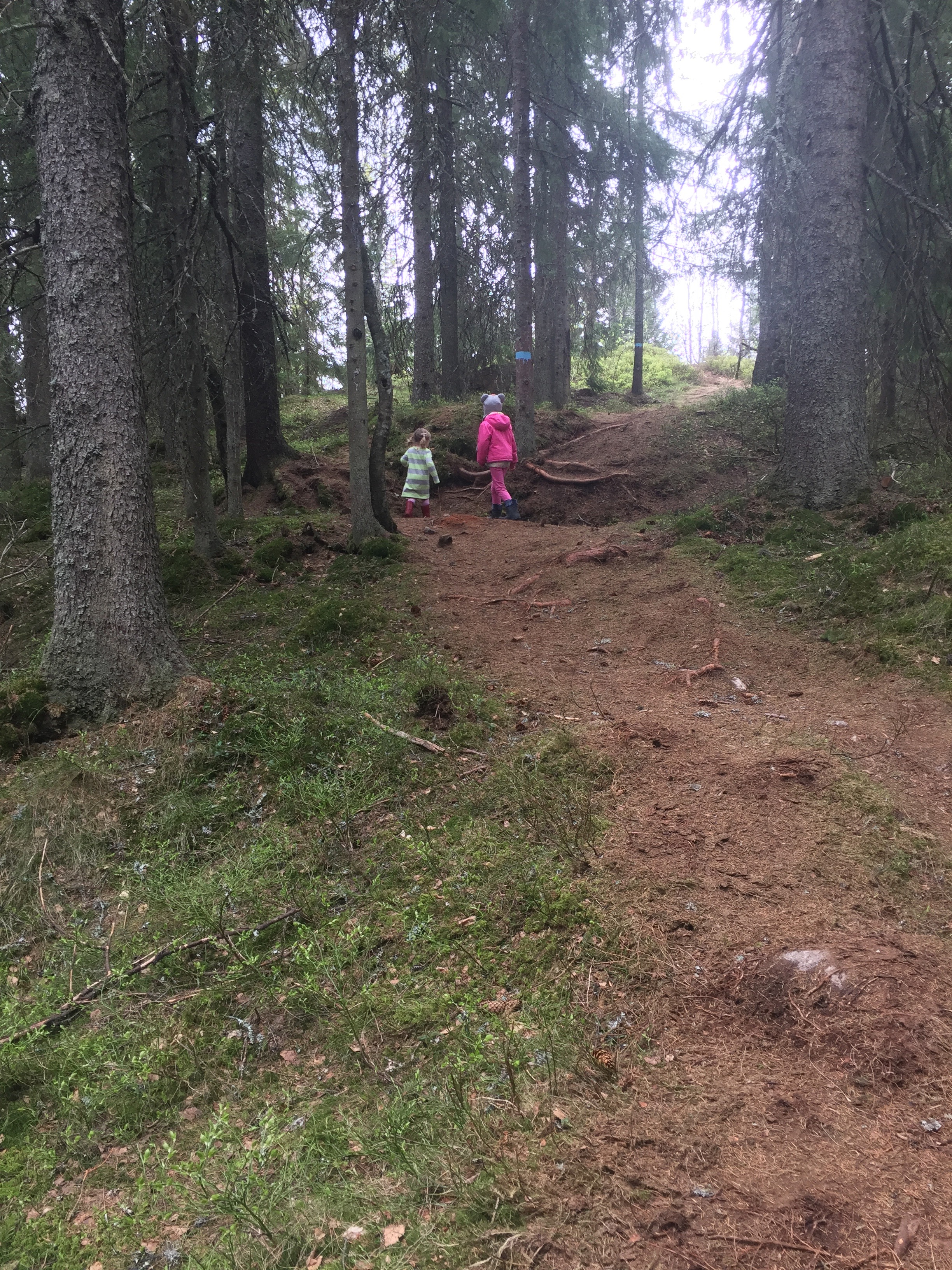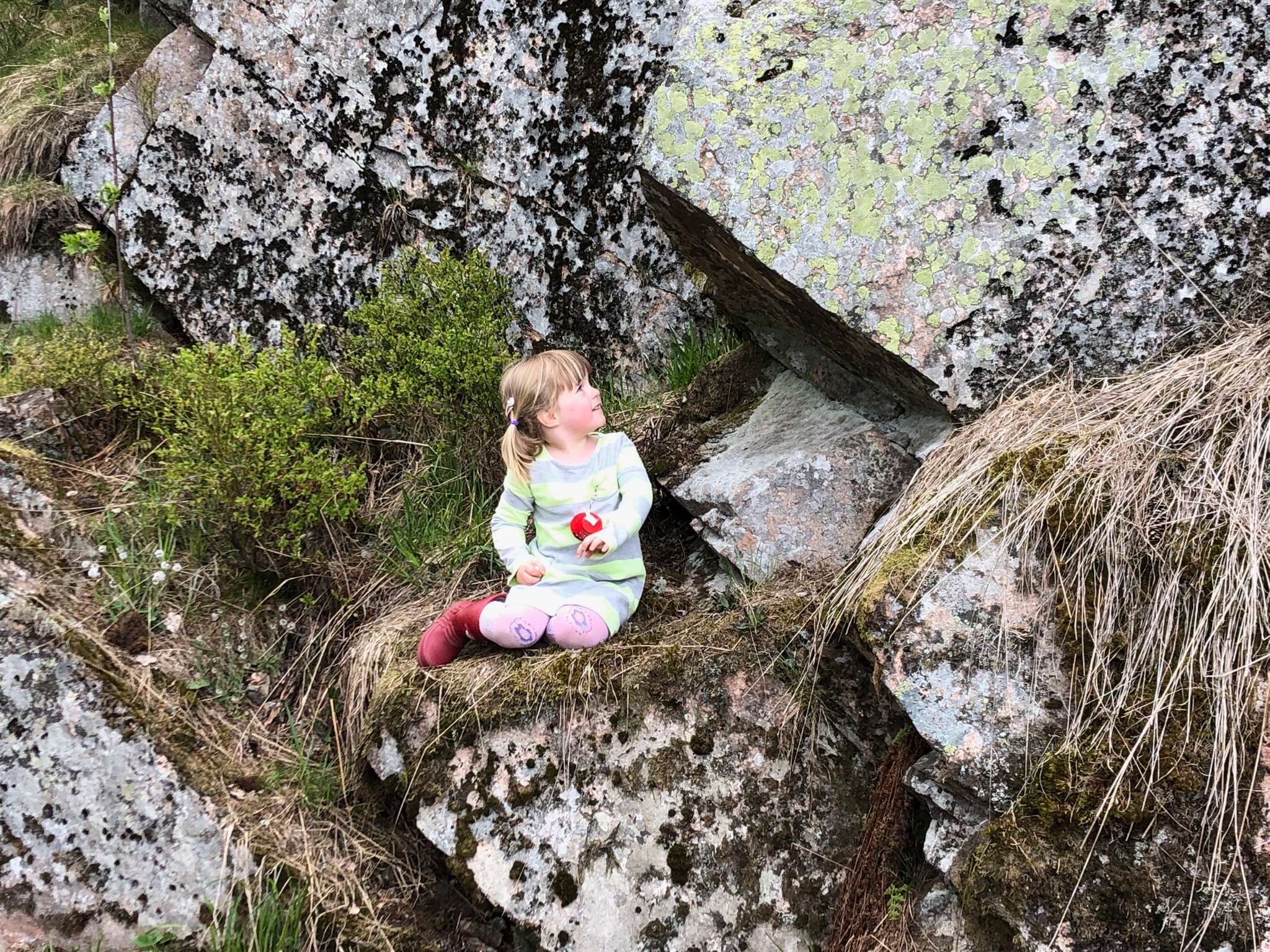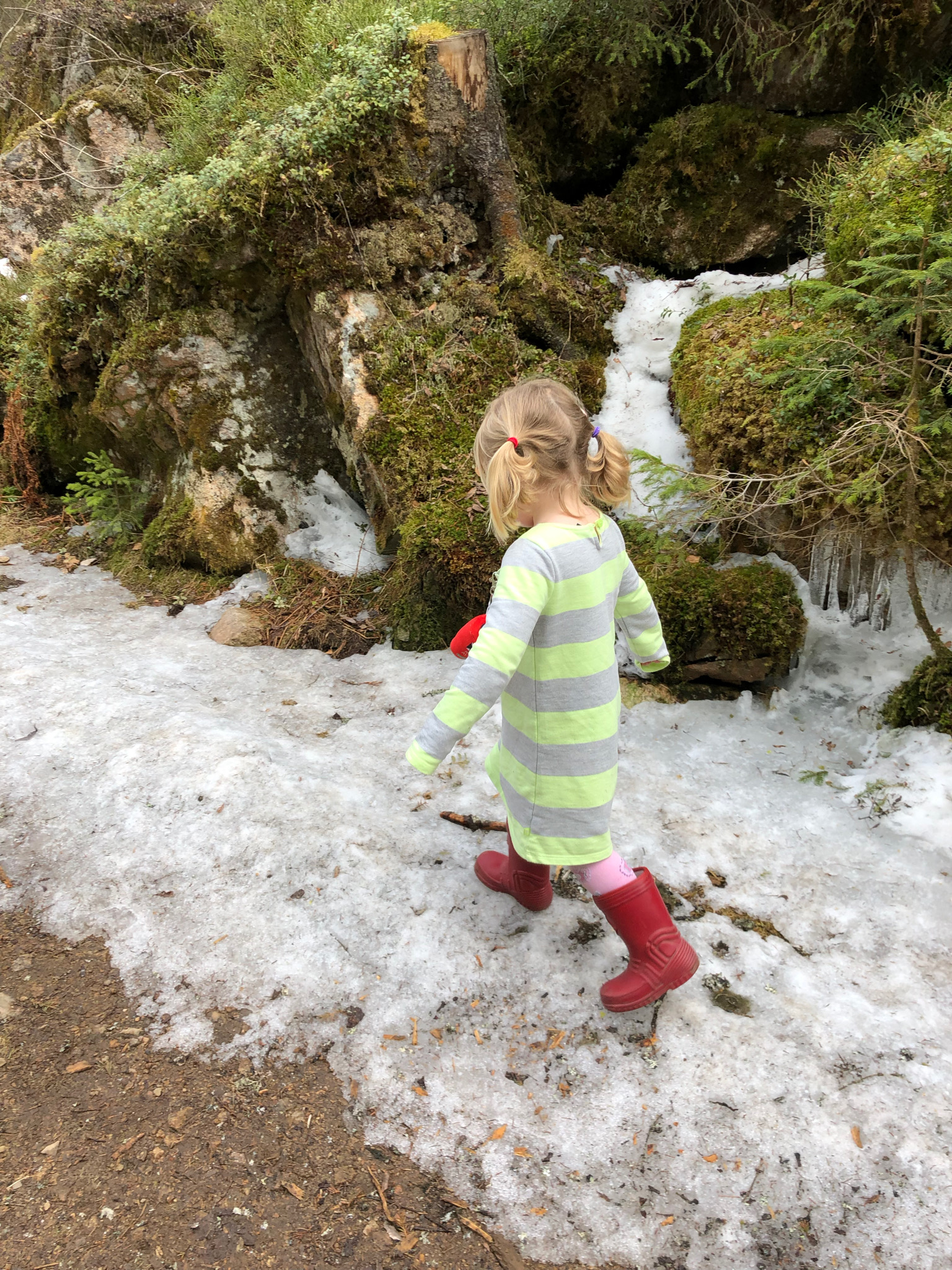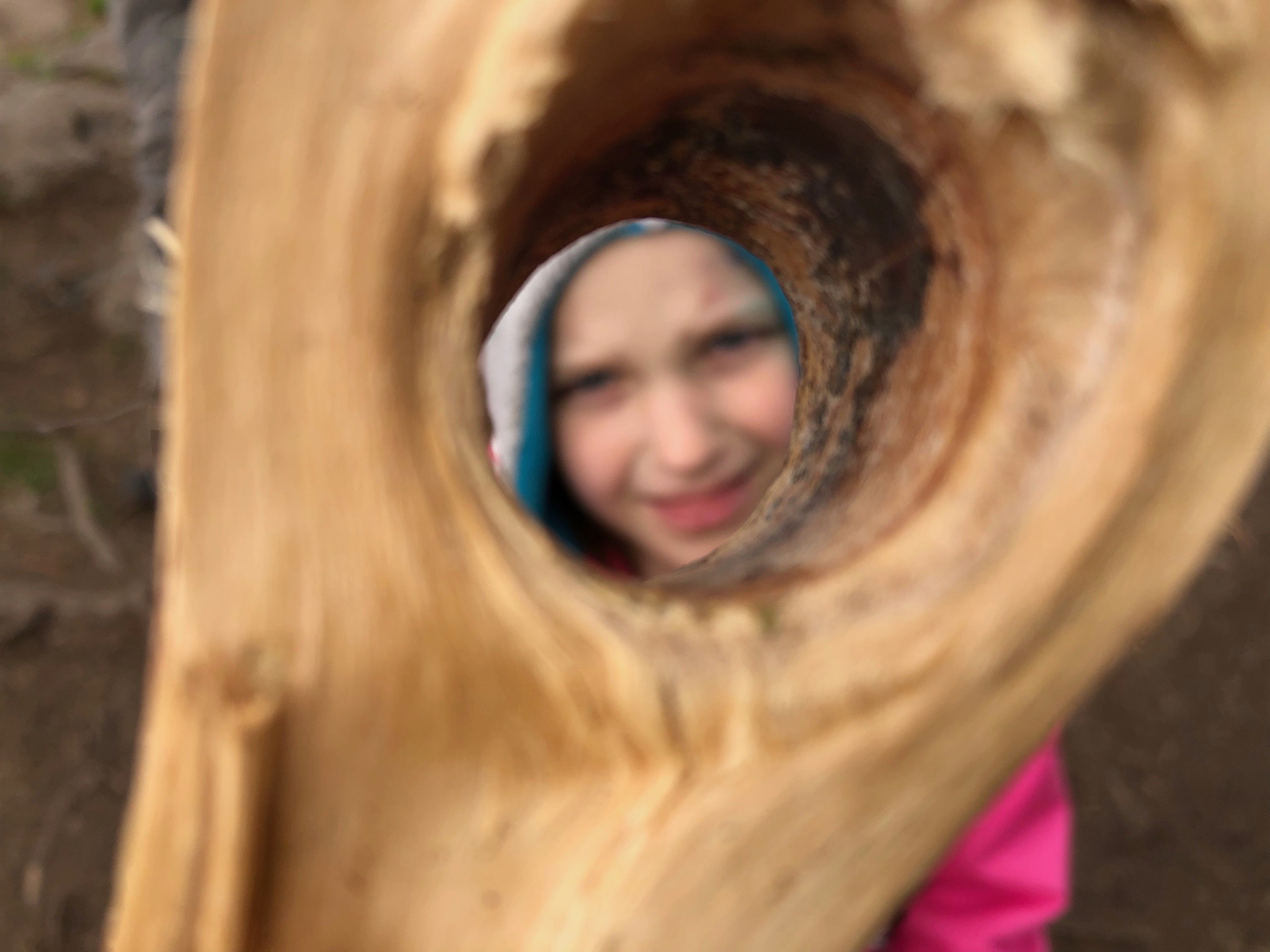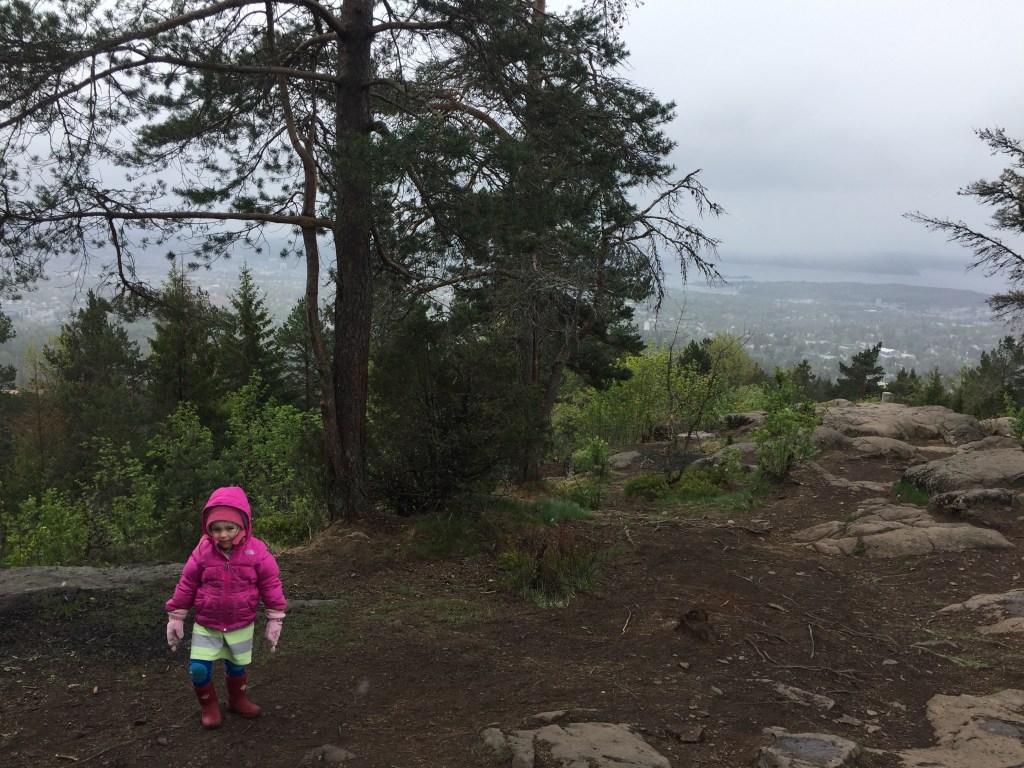Back in April, when Diana went to Iceland for the weekend with her friend Mimi, I decided to be adventurous and take Maddie and Ada on a weekend trip to Stockholm.
We left right after school for a six hour train ride to Stockholm. Here are Ada and Maddie about 4 hours into the train ride, somewhere around their usual bedtime.
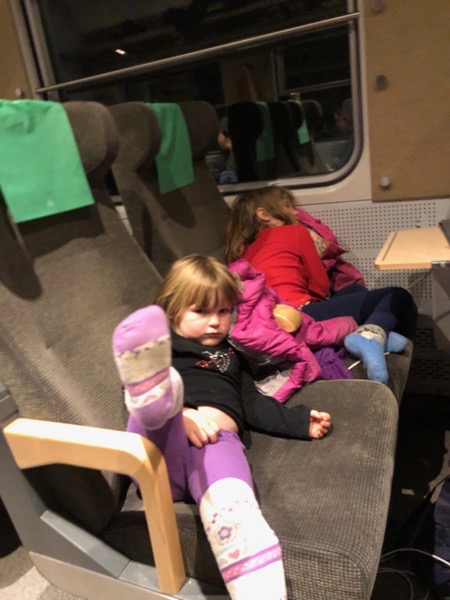
And here they are around 11 at night on a Friday when we finally arrived at our AirBnB

We stayed in an apartment in a beautiful 400 year old building right in the middle of Gamla Stan, the historic heart of Stockholm.

Of course, the first thing we did was go and see the Nobel Prize Museum.
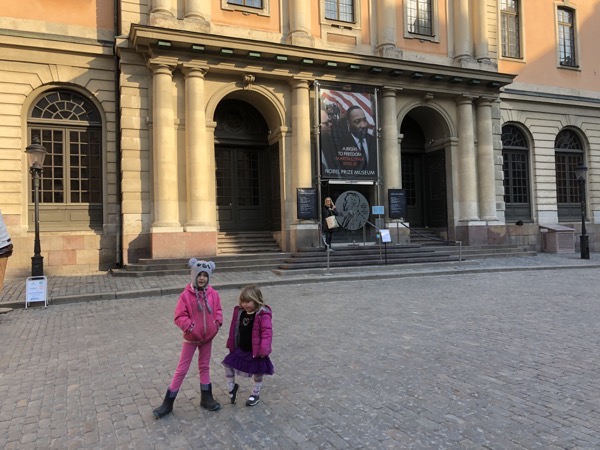
We spent most of our time searching for artifacts from Marie Curie, but the girls did complete a cute “Road to My Own Nobel Prize” activity…
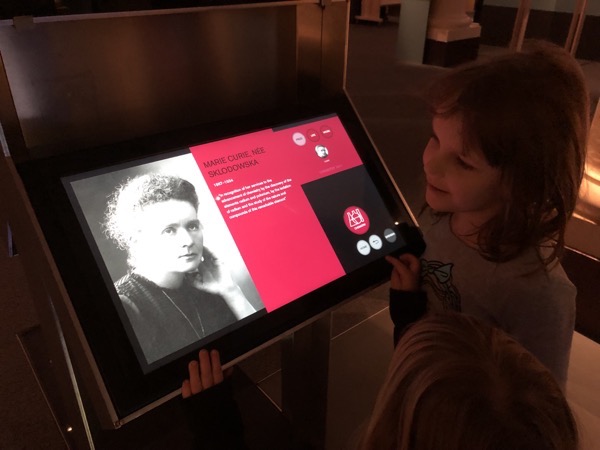
Which did lead to a (chocolate) Nobel Prize
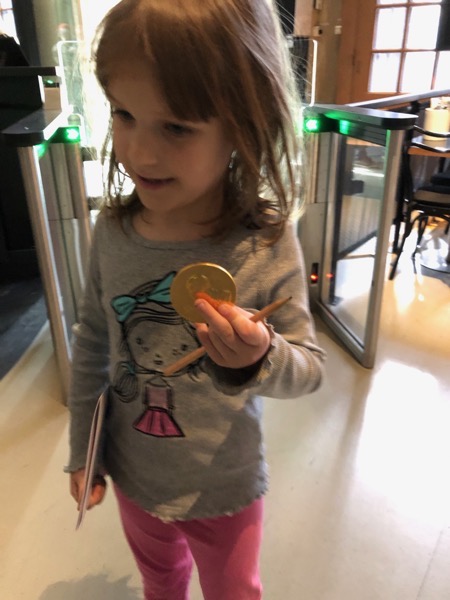
For lunch, we had the traditional Swedish meatballs,
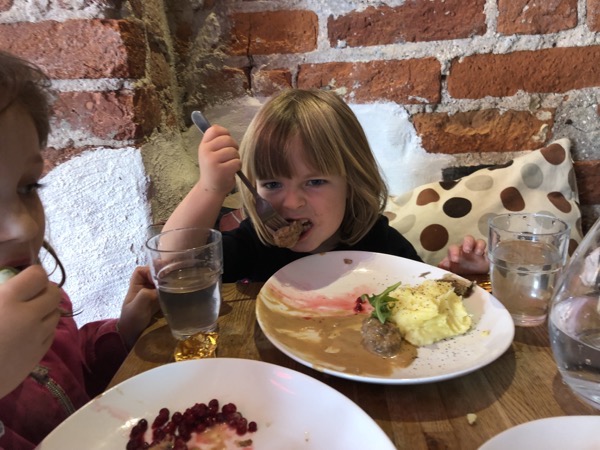
followed by ice cream (blueberry lavender flavor).
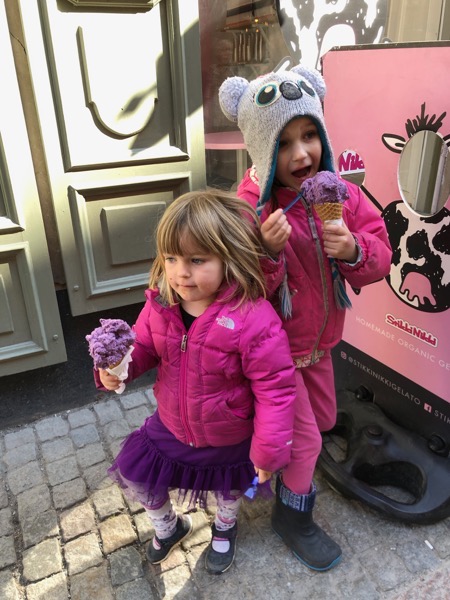
We took a ferry over to Junibacken, a great kids play area themed around Swedish children’s stories, and the girls played on a sledding simulator that let you pretend you were going down a long and winding sled run.

Shortly after our adventure at Junibaken, Ada started to complain that her tummy hurt, and Maddie was weary from all of the walking. We made it back to our AirBnB, and I thought we’d try for dinner nearby after a short rest. Unfortunately, just as we got to the restaurant around the corner, with me carrying Ada, she began to tap on my shoulder as I inquired about a table. When I looked at Ada, I saw her hand was over her mouth, and so we quickly ran from the restaurant, getting out the front door just in time for her to throw up over me and her just outside the front steps of the restaurant.
And so we trudged back to our AirBnB to got cleaned up, ordered some Chinese food on delivery, and capped the evening with some videos.
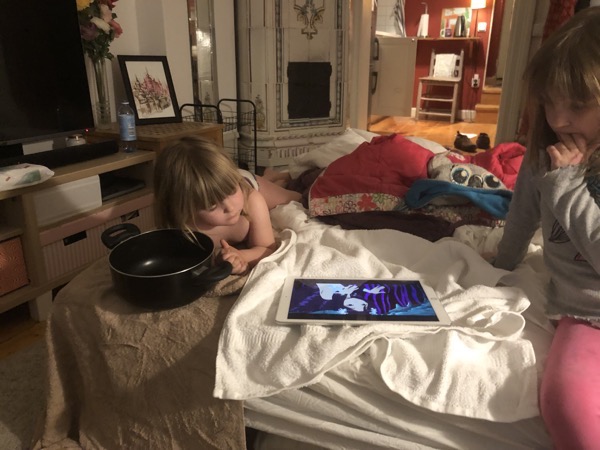
On Sunday, we went to the National Museum of Science and Technology in Stockholm, before catching a 3 hour train followed by a 3 hour bus ride back.

All in all it was a great trip, and reminded me that Maddie and Ada are becoming very good traveling companions, and that I should stay open to last minute adventures.
For much of this spring, we’ve been thinking about what to do for a final trip after the girls completed school. At first, we wanted to visit Lofoten, a beautiful part of northern Norway, but all our research seemed to indicate that it would be pretty hard to see all that we wanted to see without a car. And, in order to drive in Norway, we would need to complete the very expensive and difficult driving test, which didn’t seem worth it.
So, we decided to make a return to Sweden, this time to revisit Stockholm with Diana, but also to see Midsomer, the Swedish celebration of the summer solstice.
After Maddie and Ada finished school on June 20, we took a bus to Karlstad, Sweden, and rented a car—a tiny Volkswagen Golf with a manual transmission. Even though I’ve loved not driving for the past year, it was nice to get behind the wheel of a car again. It was way less nice when filling up a little more than half a tank of gas. Roughly 25 liters of gas (about 6 gallons) cost us nearly 50 dollars! It made me very glad we had abandoned our original idea of renting a campervan and driving around Sweden.
Our first destination was just outside the town of Leksand, in the Dalarna region, which is home to “real Sweden” everyone told us, and the place everyone goes to celebrate Midsomer. And they were right—Dalarna is beautiful. Everywhere along the roads you see beautiful pink, and purple wildflowers, and this was the view outside our hotel window.

The big celebration of Midsomer takes place in the afternoon on the Solstice, and centers around decorating a maypole, and then heaving it up into standing position in an intricate process using several pairs of long wooden sticks and lots of people.
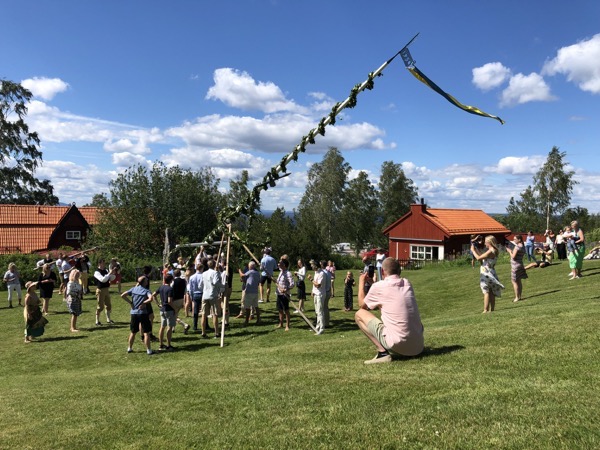
Once the pole is lifted, everyone dances around it to Swedish folk music.

This process takes a while, and it involves a lot of instructions in Swedish, so Maddie and Ada weren’t so thrilled that we saw 3 maypoles being hoisted on Midsomer weekend, including one children sized one that Ada helped to decorate.

Adults and children (boys and girls) also wear crowns out of wildflowers, and here is Ada, somewhat reluctantly modeling the crown Diana made for her.

At our last May pole hoisting, Maddie and Ada really just wanted to run around and play.

Dalarna is also famous for the Dela Horse, a red wooden horse hand painted in folk designs that has become a national symbol of Sweden. We spent an afternoon visiting a factory for these horses and painting our own versions.

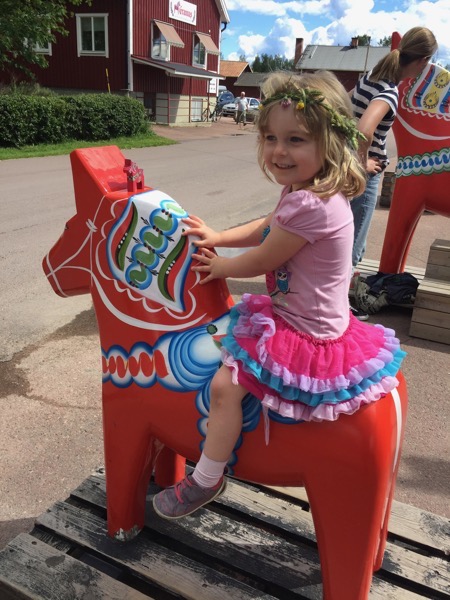

We also visited Sommarland, a small amusement park near Lekesand. Like the amusement park in Lillihammer we visited, Sommarland was more low key, and seems to operate under the principle of providing fairly unstructured opportunities for kids to have fun. In this case, there was a small 1.5 foot deep lake in the middle of the park, and boats of all types—canoes, kayaks, paddleboat for kids to just take out. There was also a BMX bike course set up, and kids (or adults) could just borrow a bike and take it out on the course. There are also plenty of water slides. The 60°F temperatures didn’t seem to bother most kids, but after about 20 minutes of splashing around in the kiddie pool, Maddie and Ada decided they were cold, and so we spend most of the rest of our day doing activities on land, like jumping on a giant inflatable air bag.
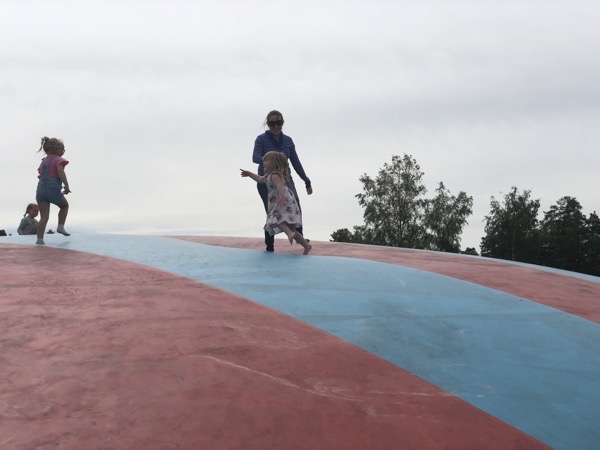
And driving small electric vehicles around a kid-sized city. The awesome thing here was that kids were basically free to use these vehicles for as long as they liked, taking turns when another child comes around wanting to drive—no queues or timers necessary.

And here’s Ada on the bungee trampoline, which she loved
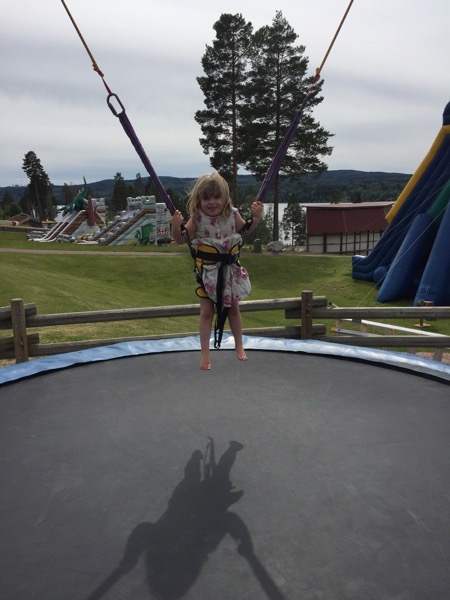
Followed by a dive into a big air bag
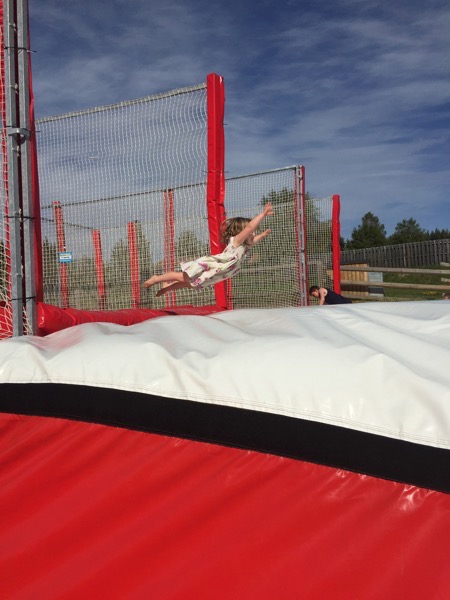
Following these adventures in the heart of Sweden, we drove to Stockholm, and one of the first things I noticed was how compact the city is. When we were half an hour from our hotel in the center of Stockholm, we were still on a four lane highway, passing farms on both sides of the road. I’ve noticed the same thing in Oslo, too, and am told that the forest line is almost sacred in Oslo, and there are many regulations to combat city sprawl.
One of our first stops was a playground in a local park in central Stockholm. They had these amazing tricycles that kids could add trailers to in all sorts of configurations. They also had people working at the playground who were constantly organizing toys and games for the kids.

We also visited Skansen, an incredible open air cultural museum, zoo and amusement park, all in one. You can tour complete historic Swedish farmhouses and villages from different time periods. When we arrived, a flock of sheep were being herded down one of the roads, and Ada followed them all the way back to her pen.
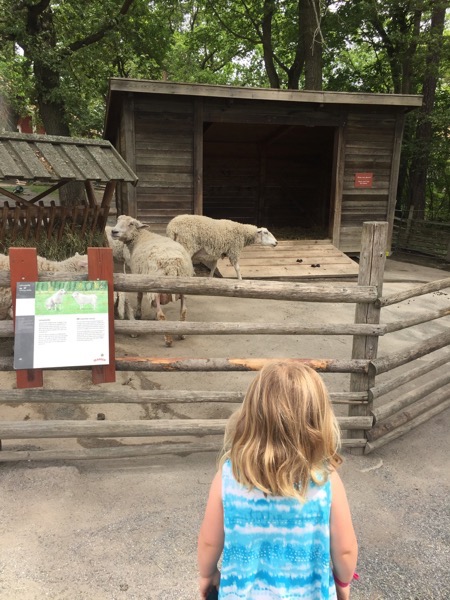
Here is Ada in the zoo part, looking through a plastic bubble at a rabbit exhibit.

We also visited the Royal Armory, which presented a good history of the Swedish monarchy, and some very beautiful carriages.
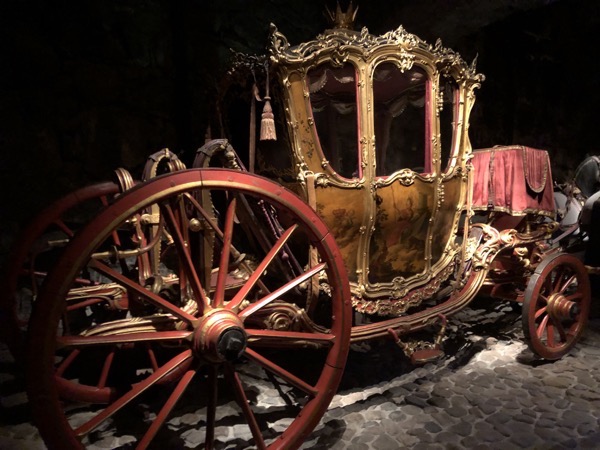
On the way to the Armory, we also made a visit back to where Ada threw up on our last trip to Stockholm.
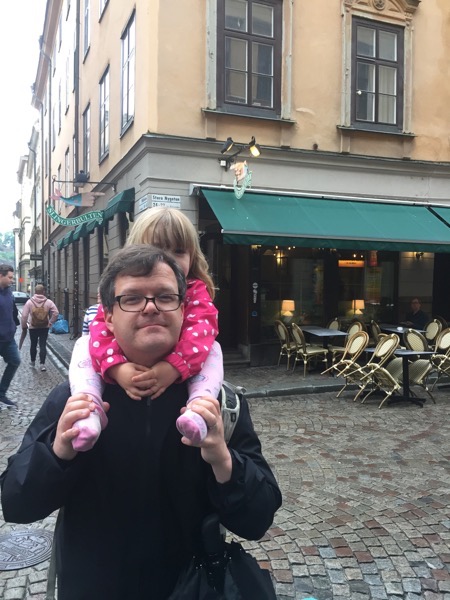
Stockholm has a small butterfly museum/shark exhibit that we visited one morning. Here are Maddie and Ada admiring the emerging butterflies.

On our last day in Stockholm, we boarded a ferry with the intent to spend the day visiting the island of Grinda, but the the Ferry announcements were so hard to understand and the port stops were so brief, that we missed the stop for Grinda, and decided to get off at the next stop, Karklö, which turned out to be a nearly unpopulated island that only got ferry service twice a day.
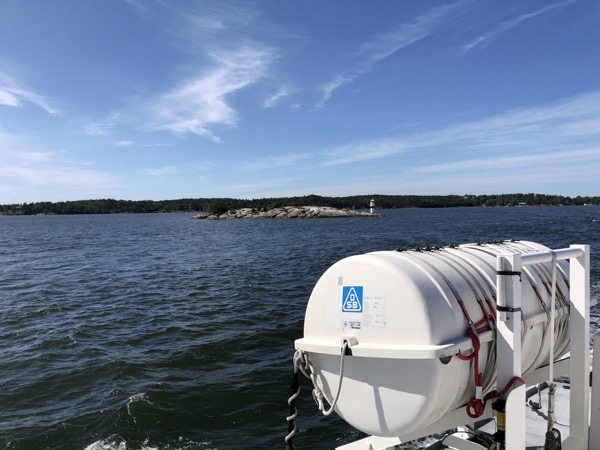
Karklö was beautiful, and made for a great day hike.

We also found a bunch of fresh blueberries along the trail.

And a very pretty coastline.

Luckily, we made the last ferry back to Stockholm which was good because were scheduled to head back to Oslo for our final few days in Norway the following morning.

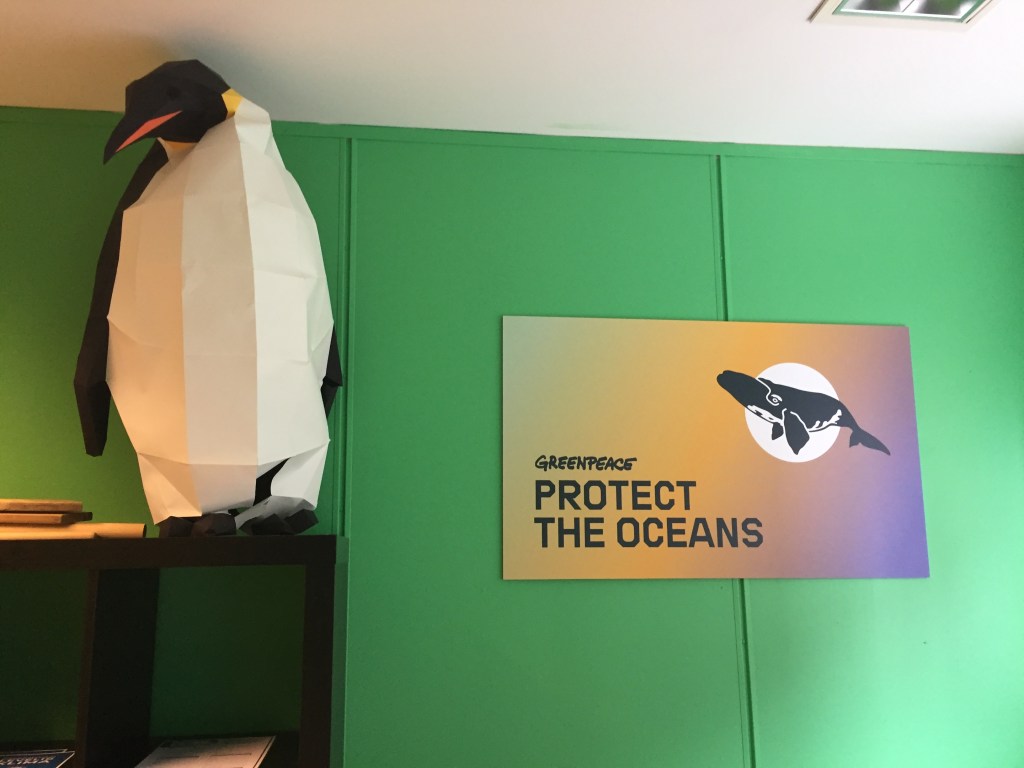
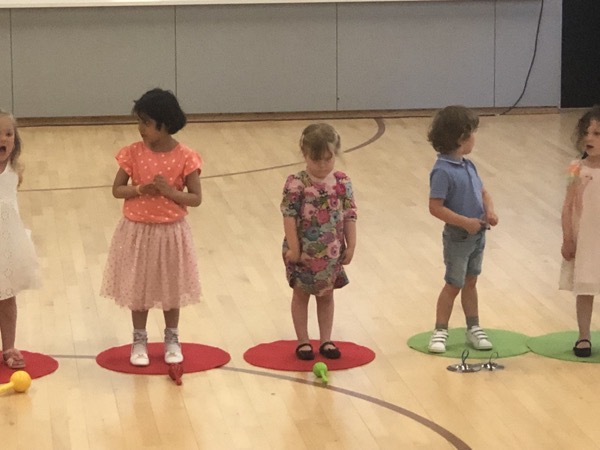
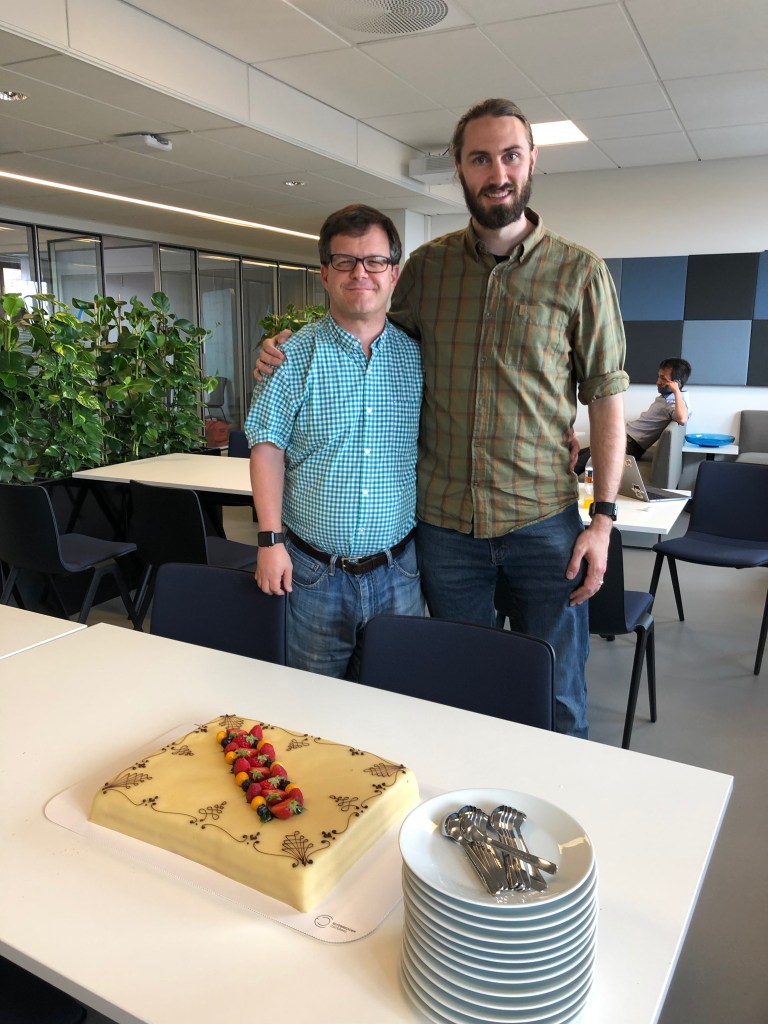

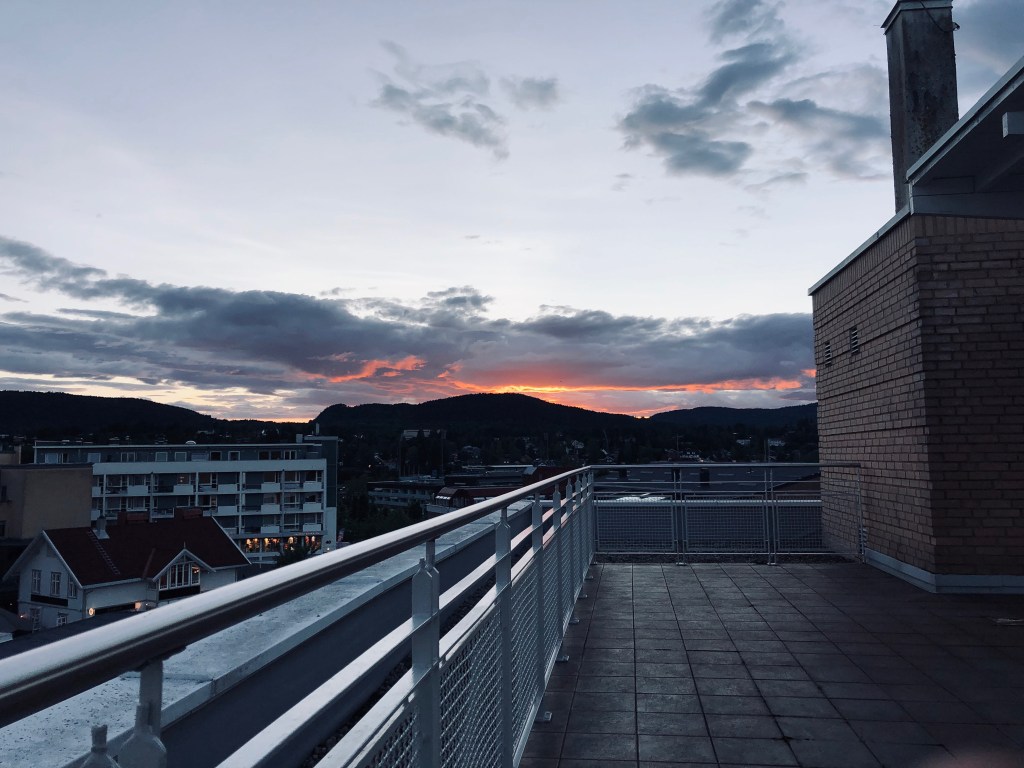

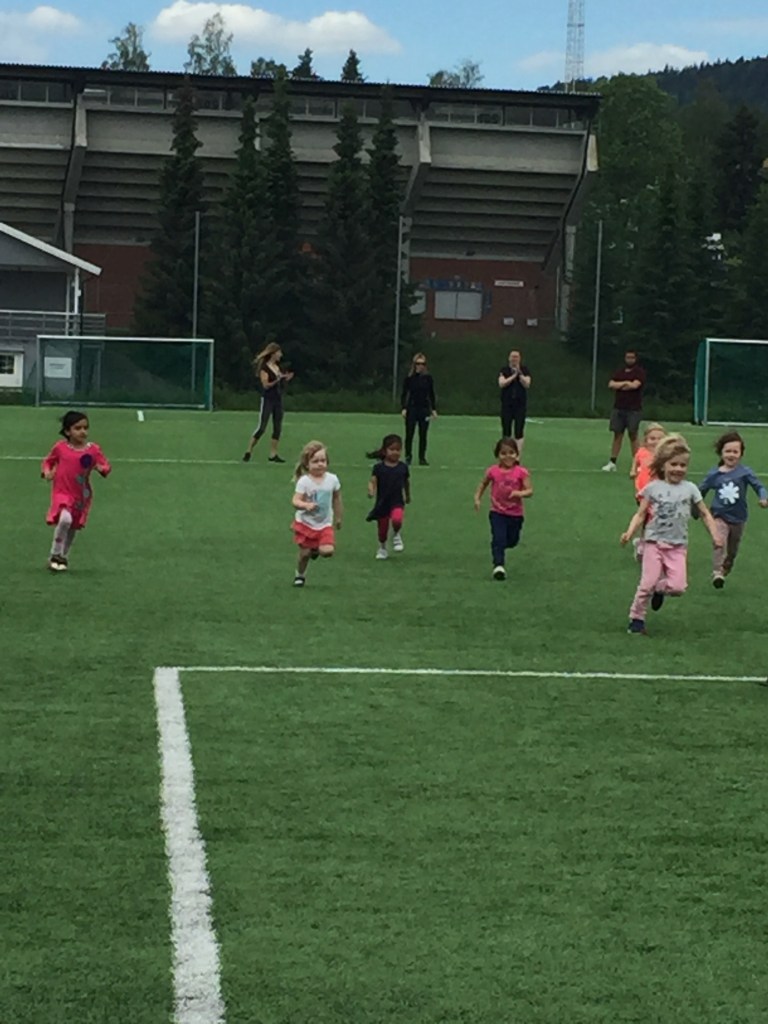

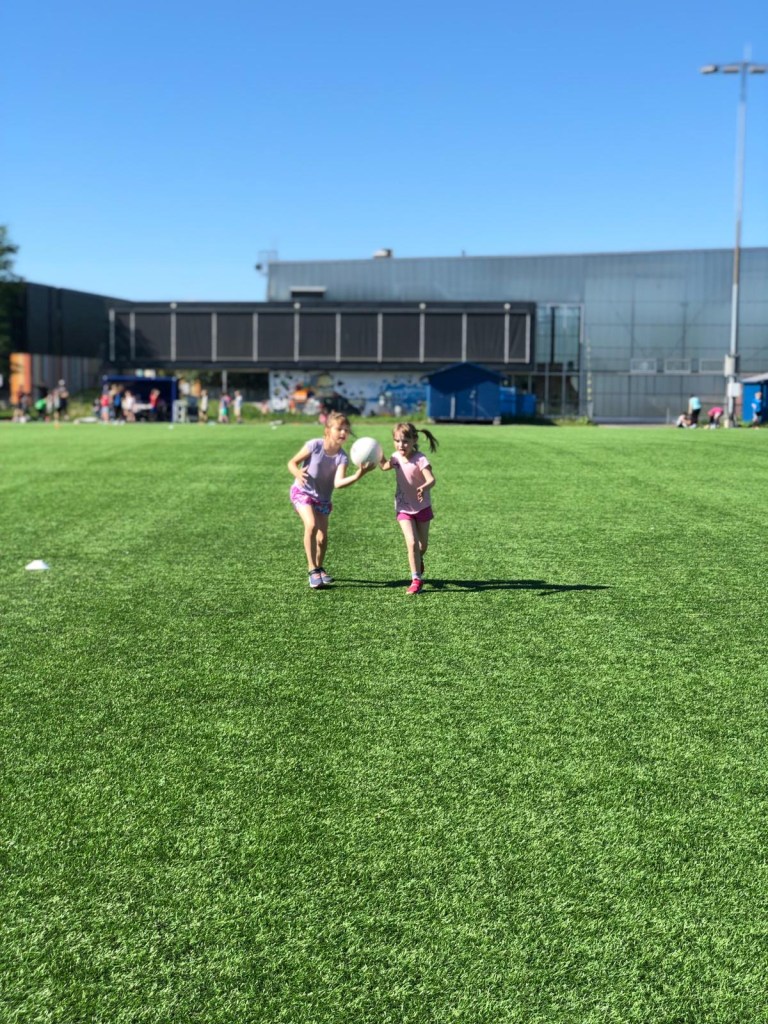
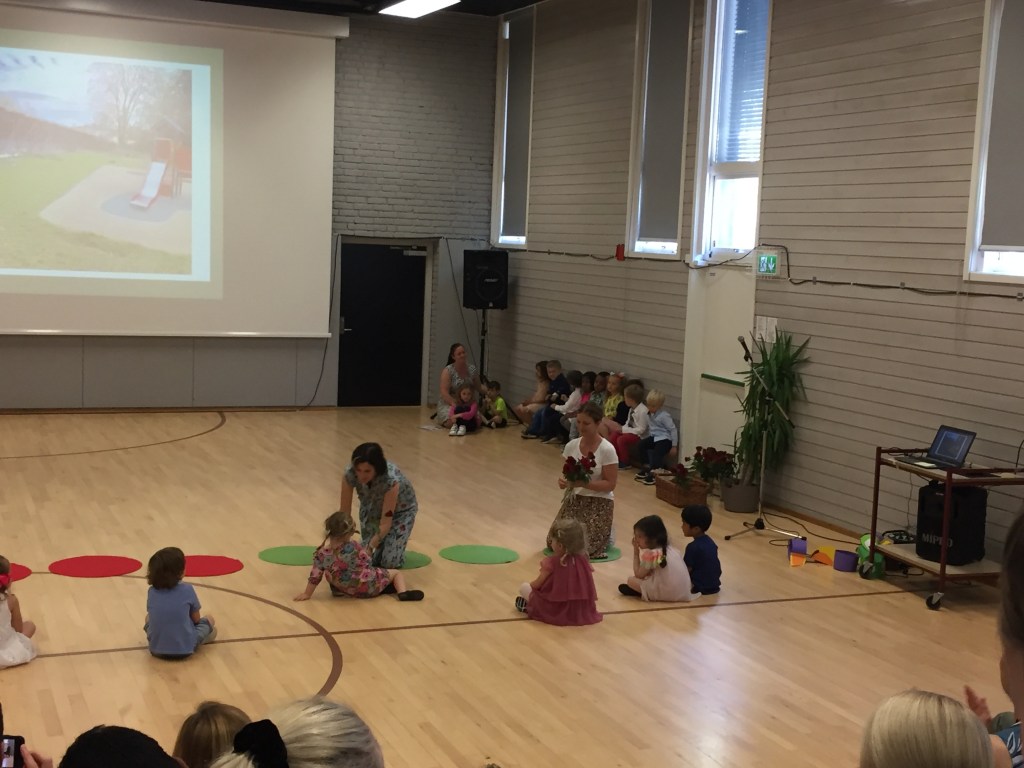

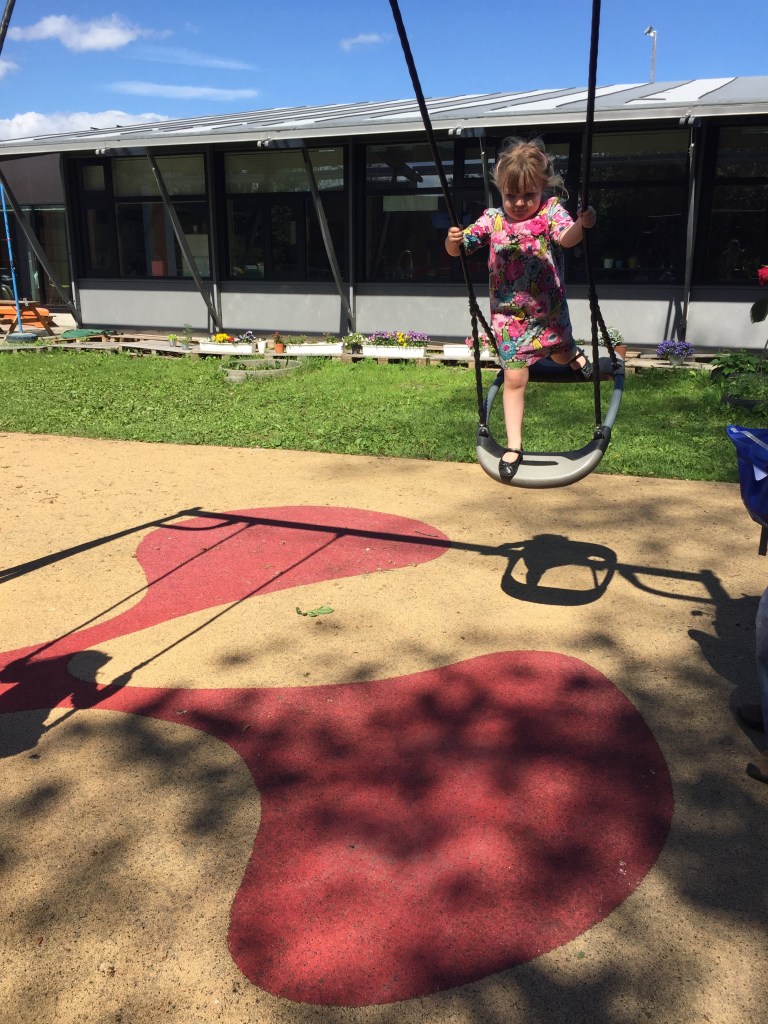
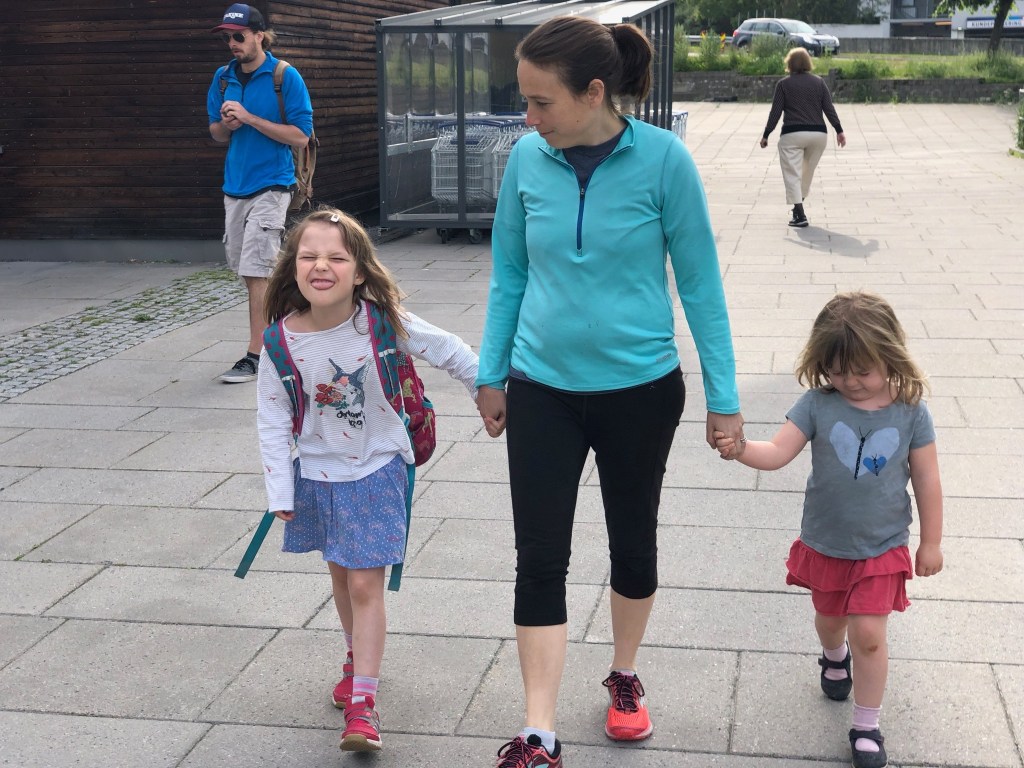


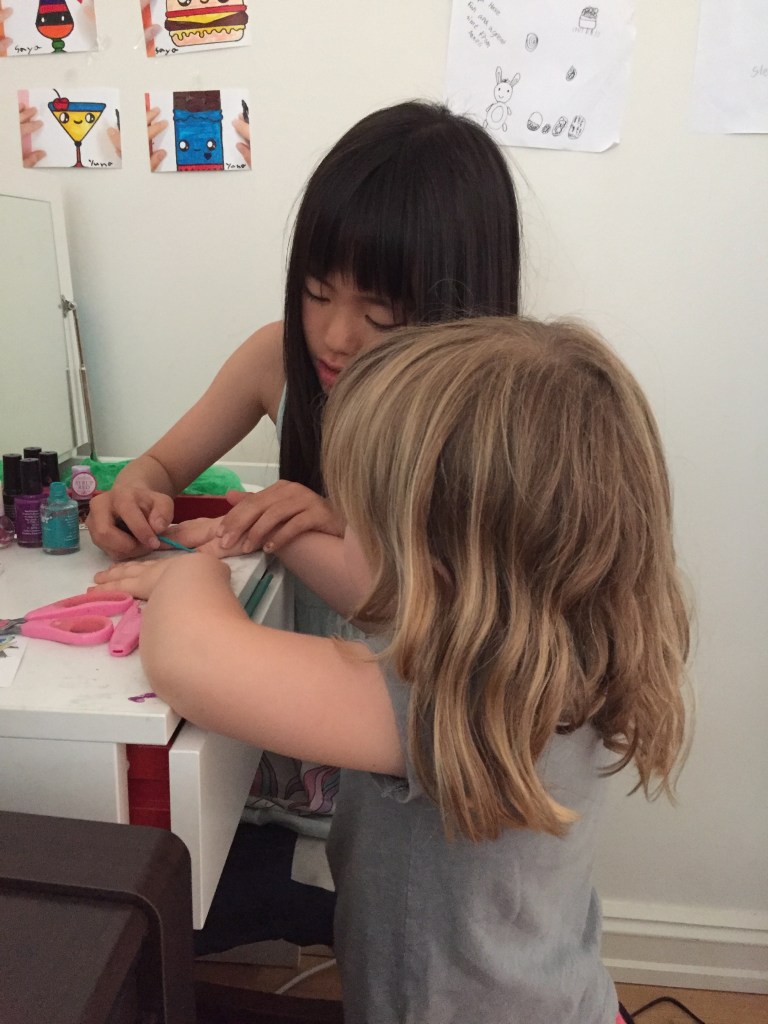



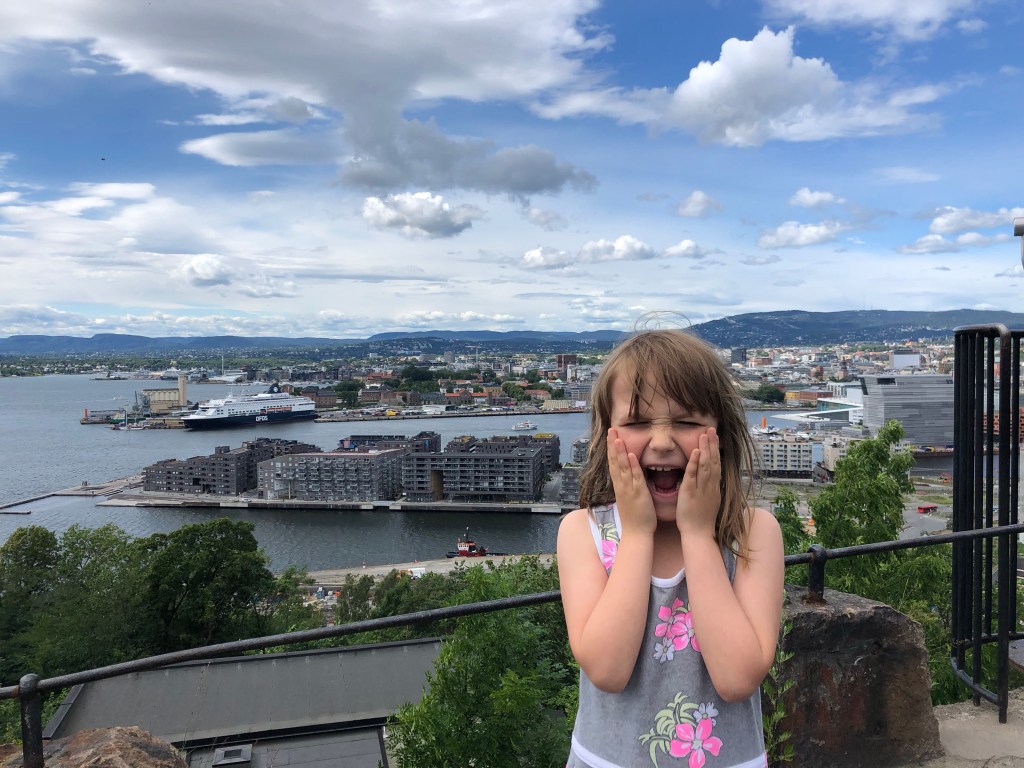


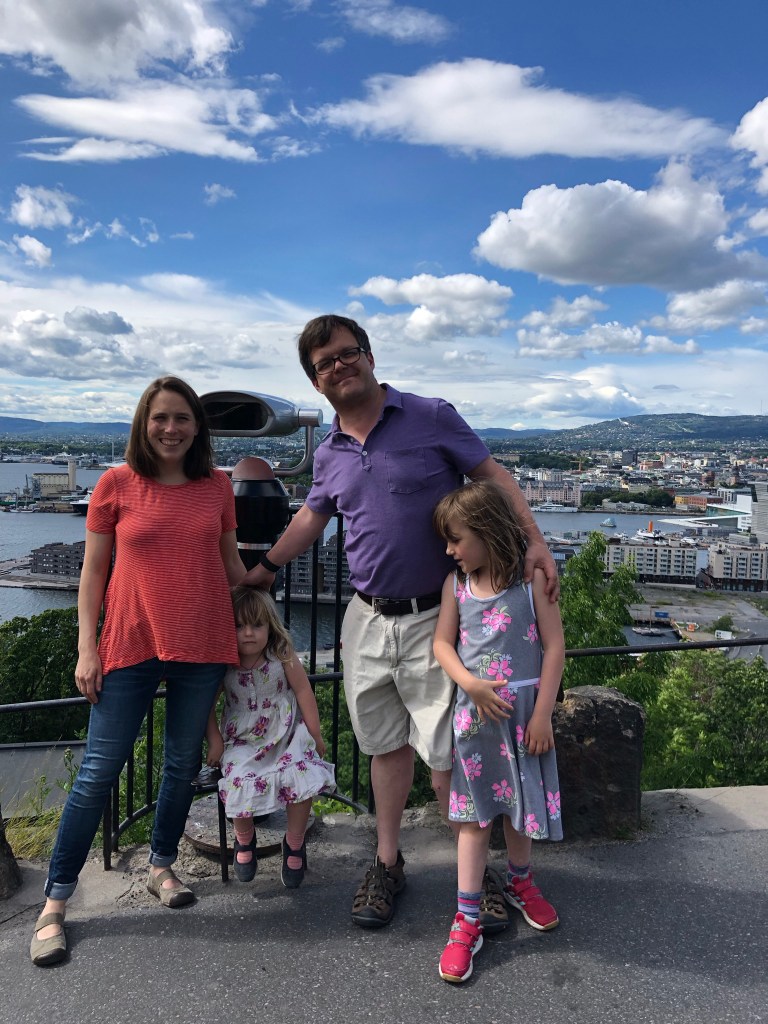

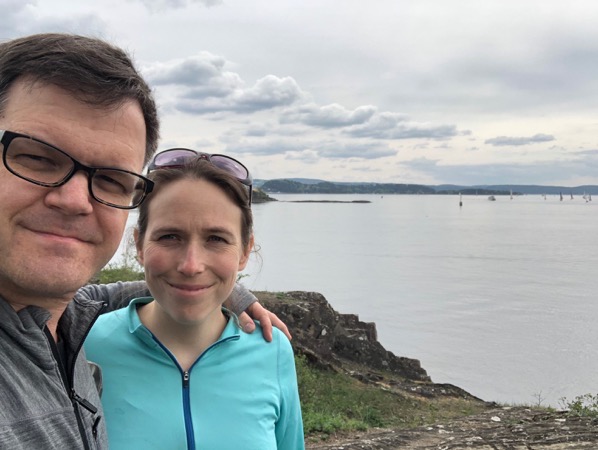


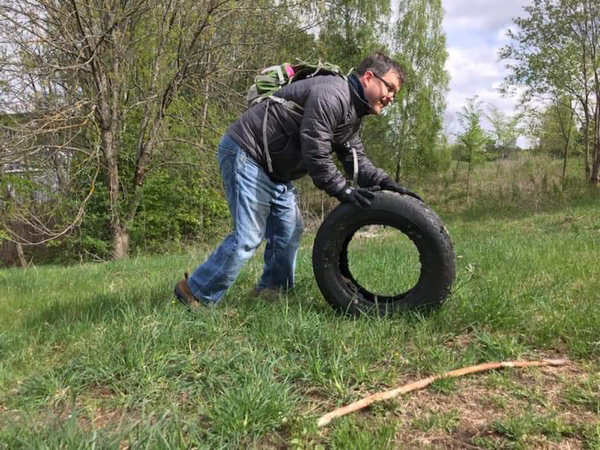


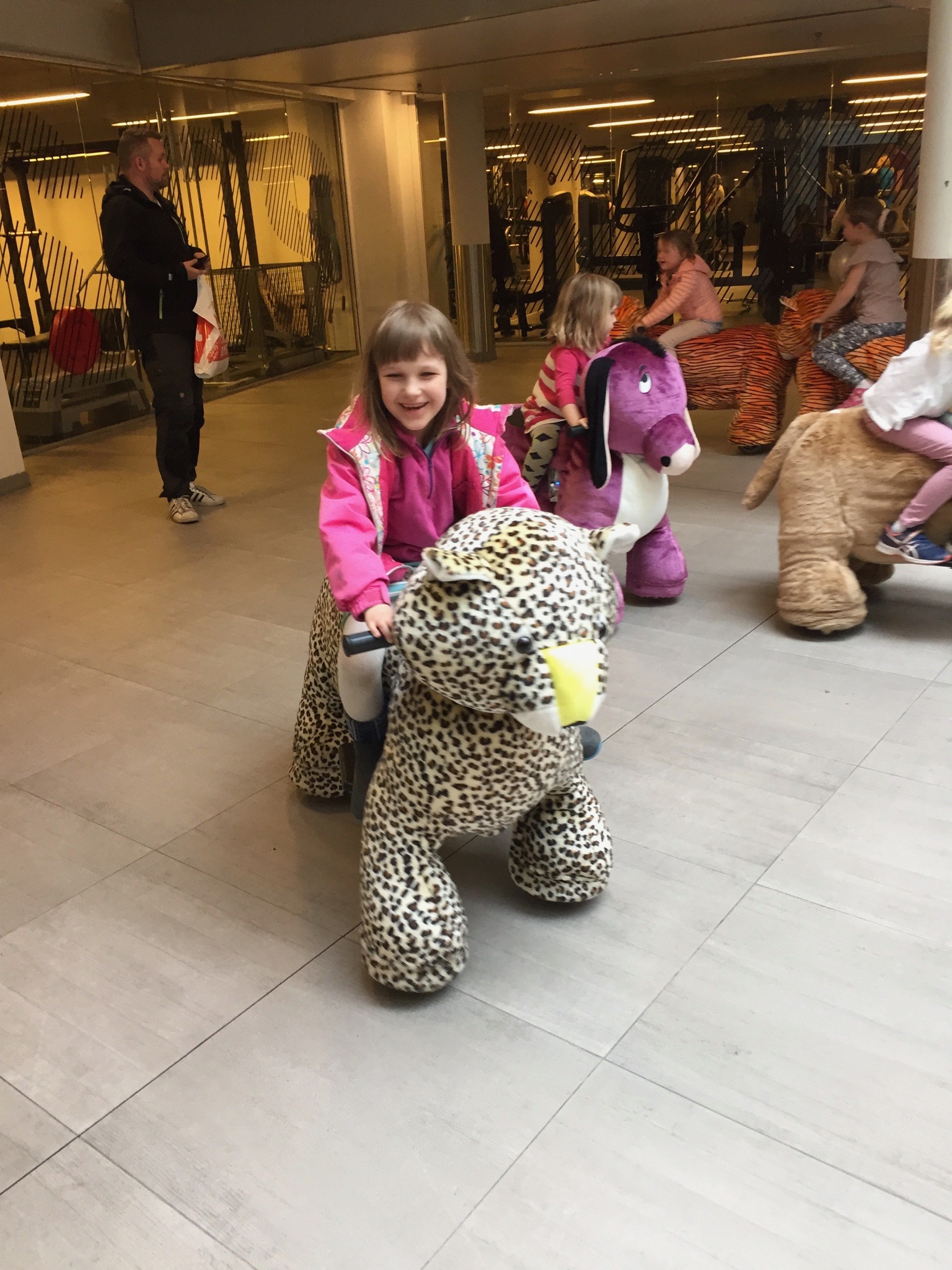
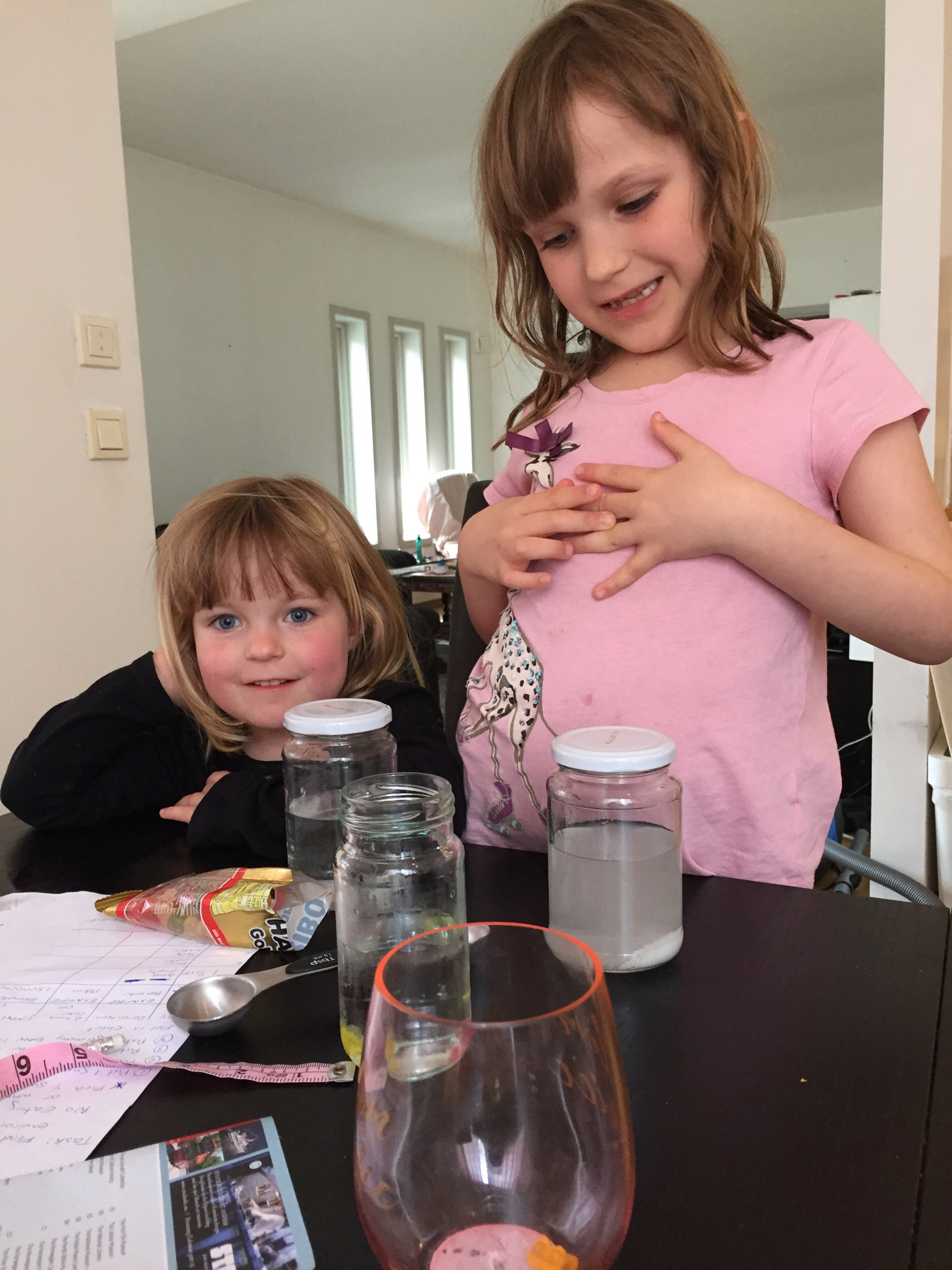
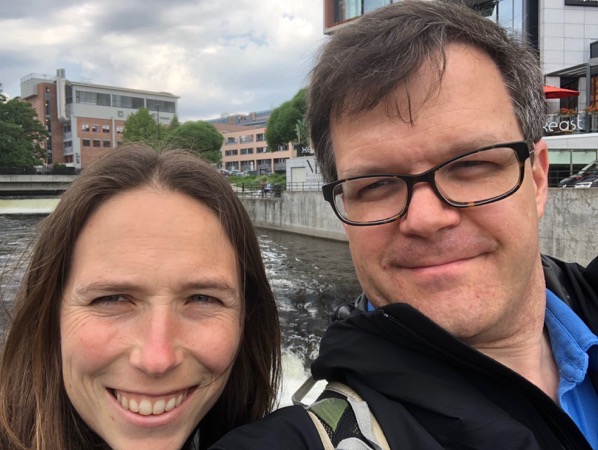


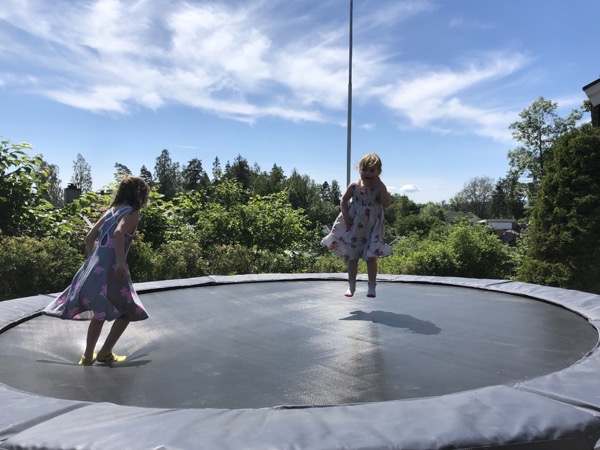


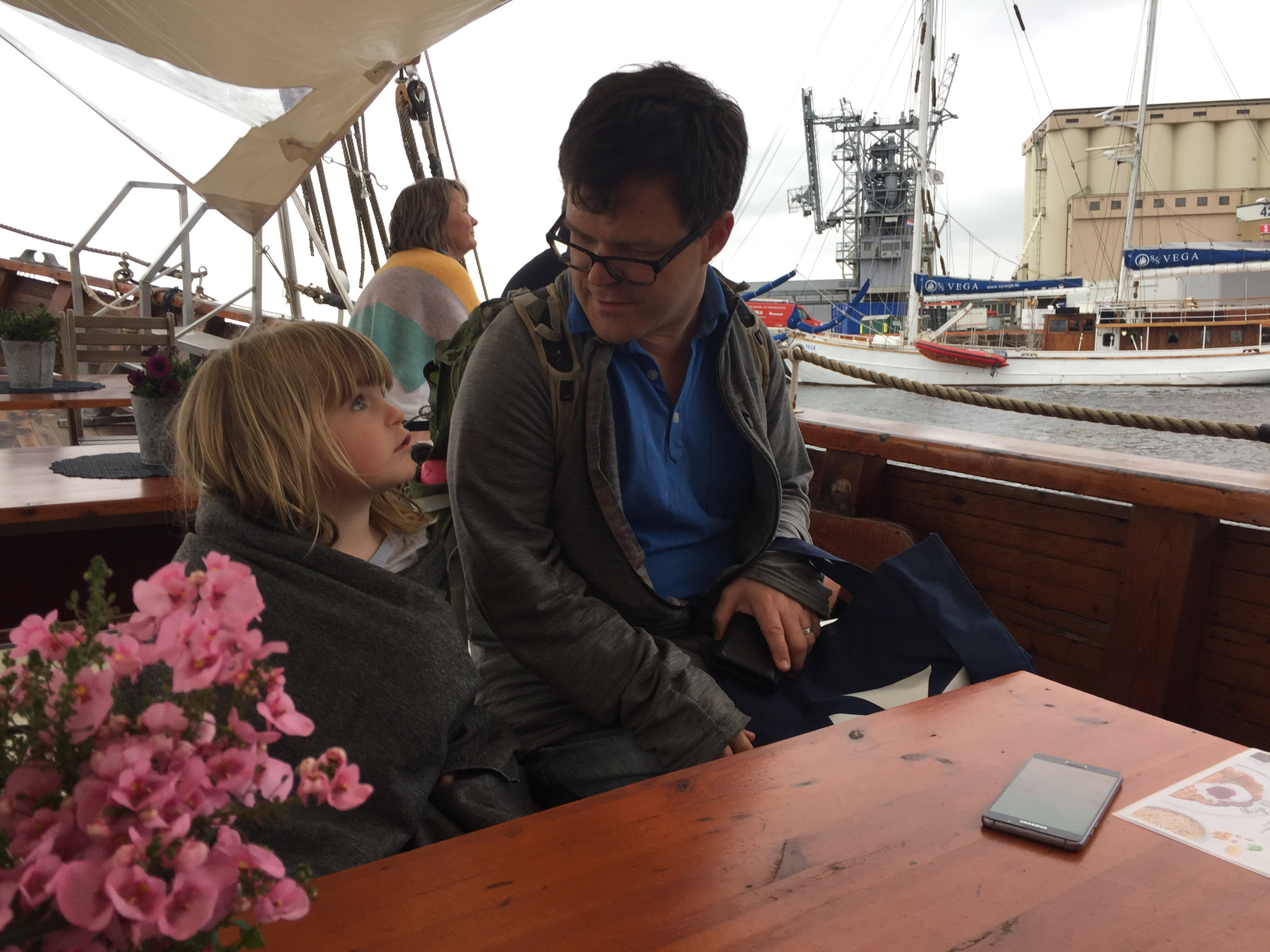


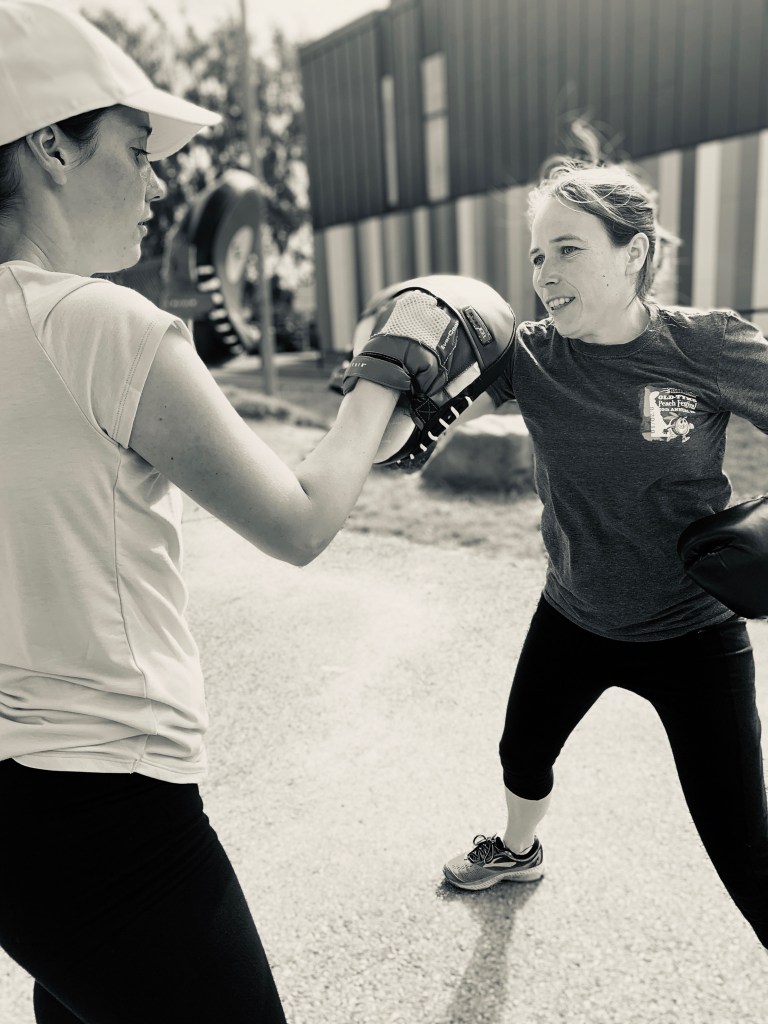




































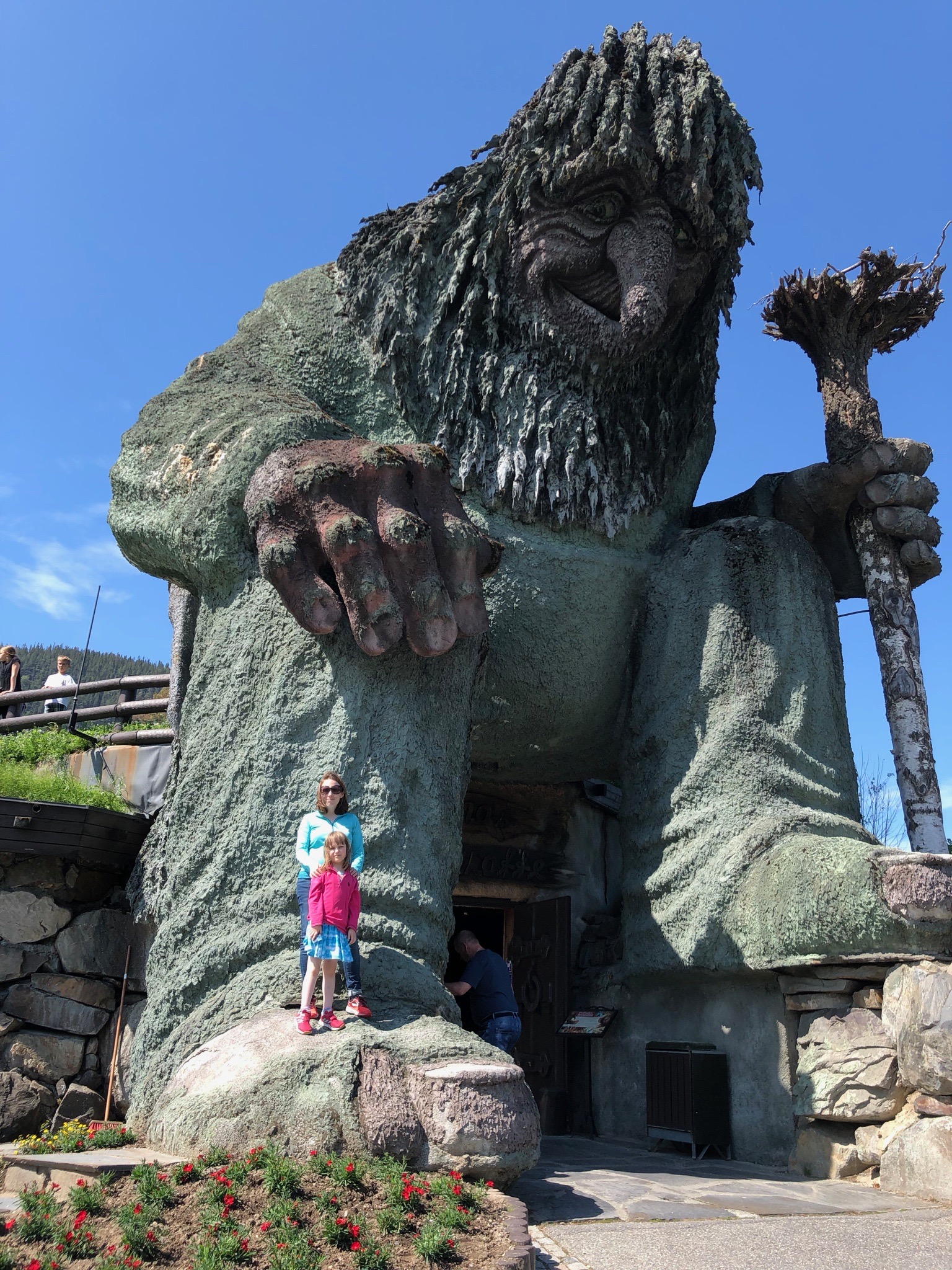

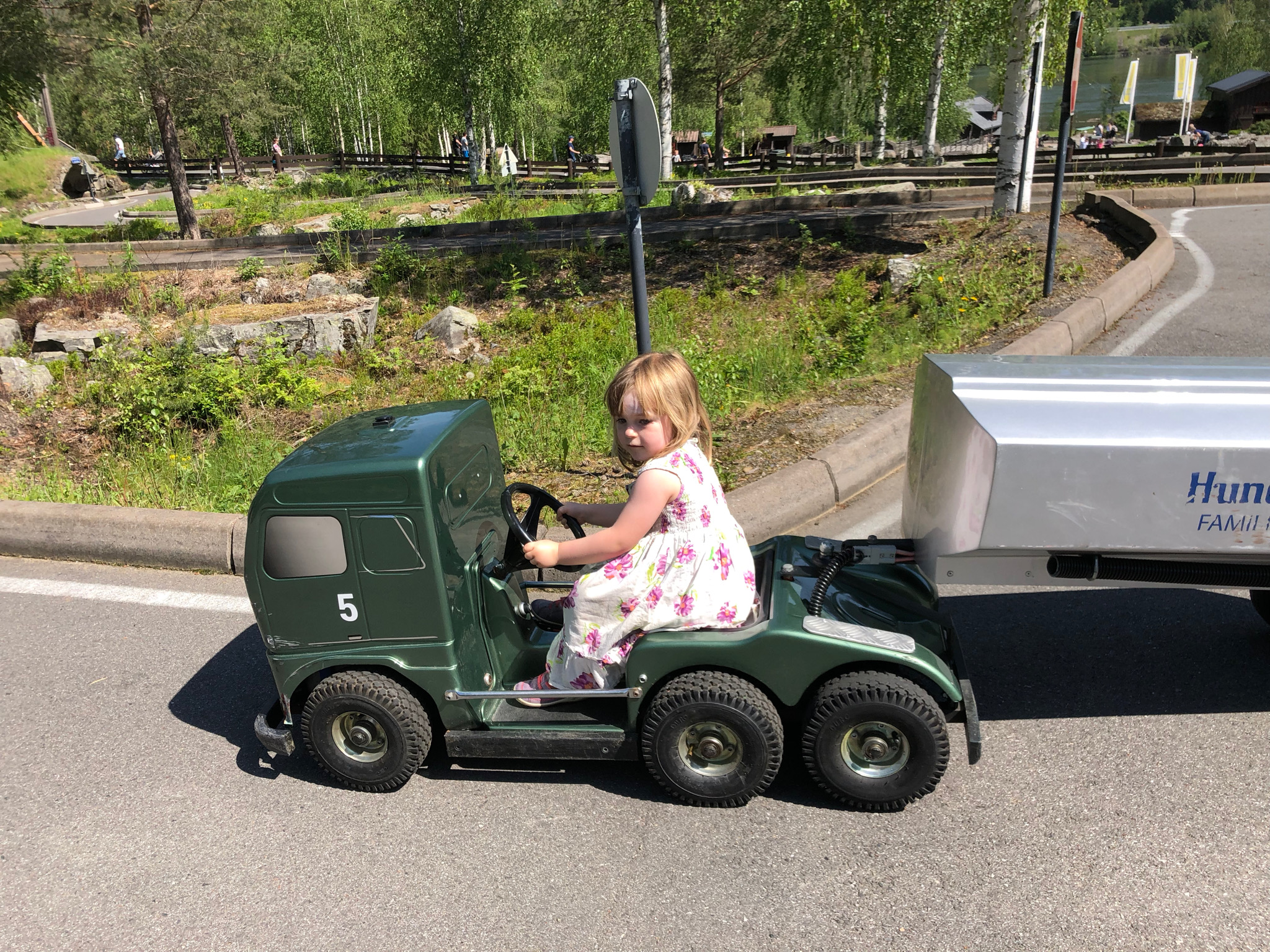
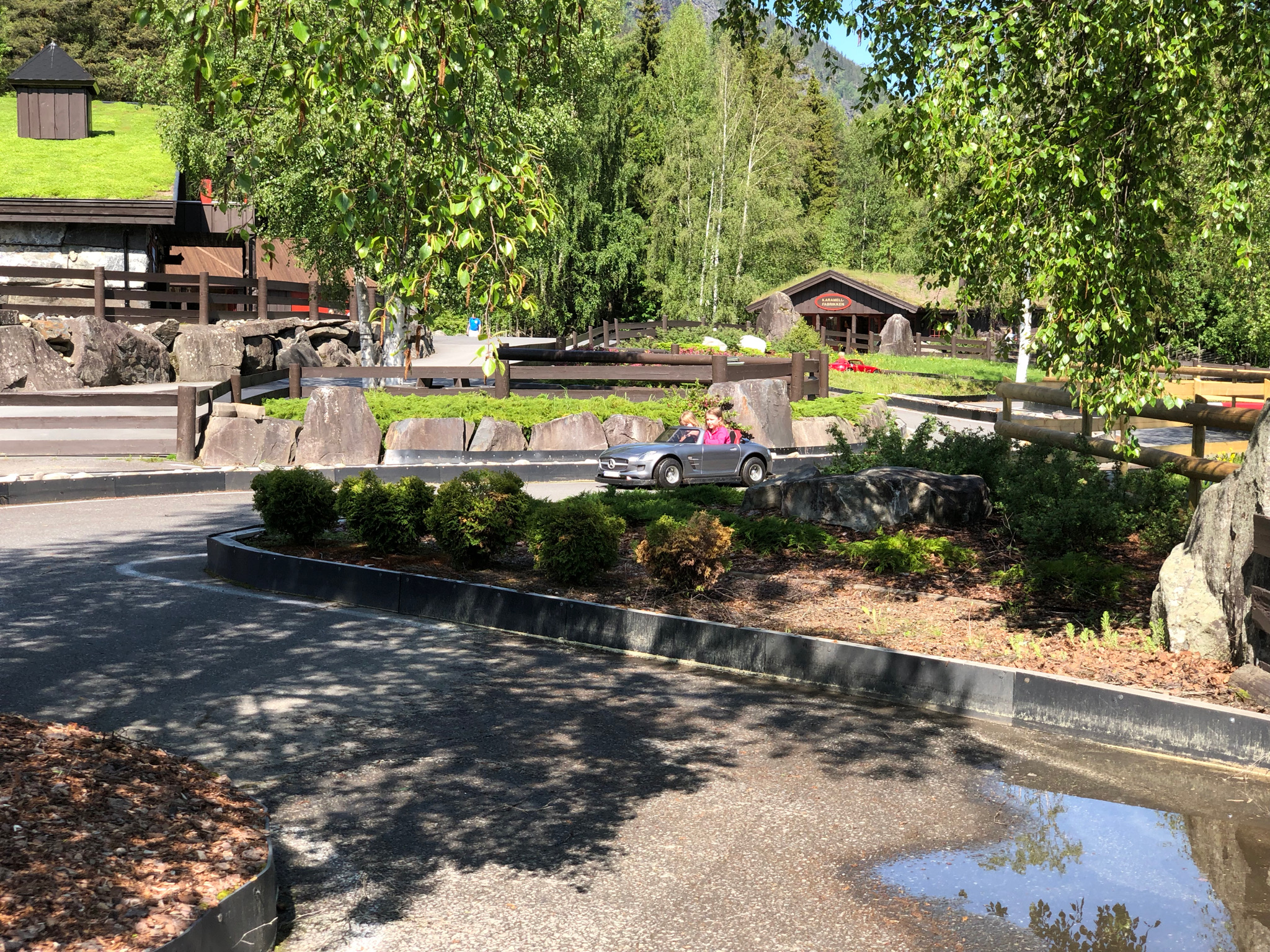
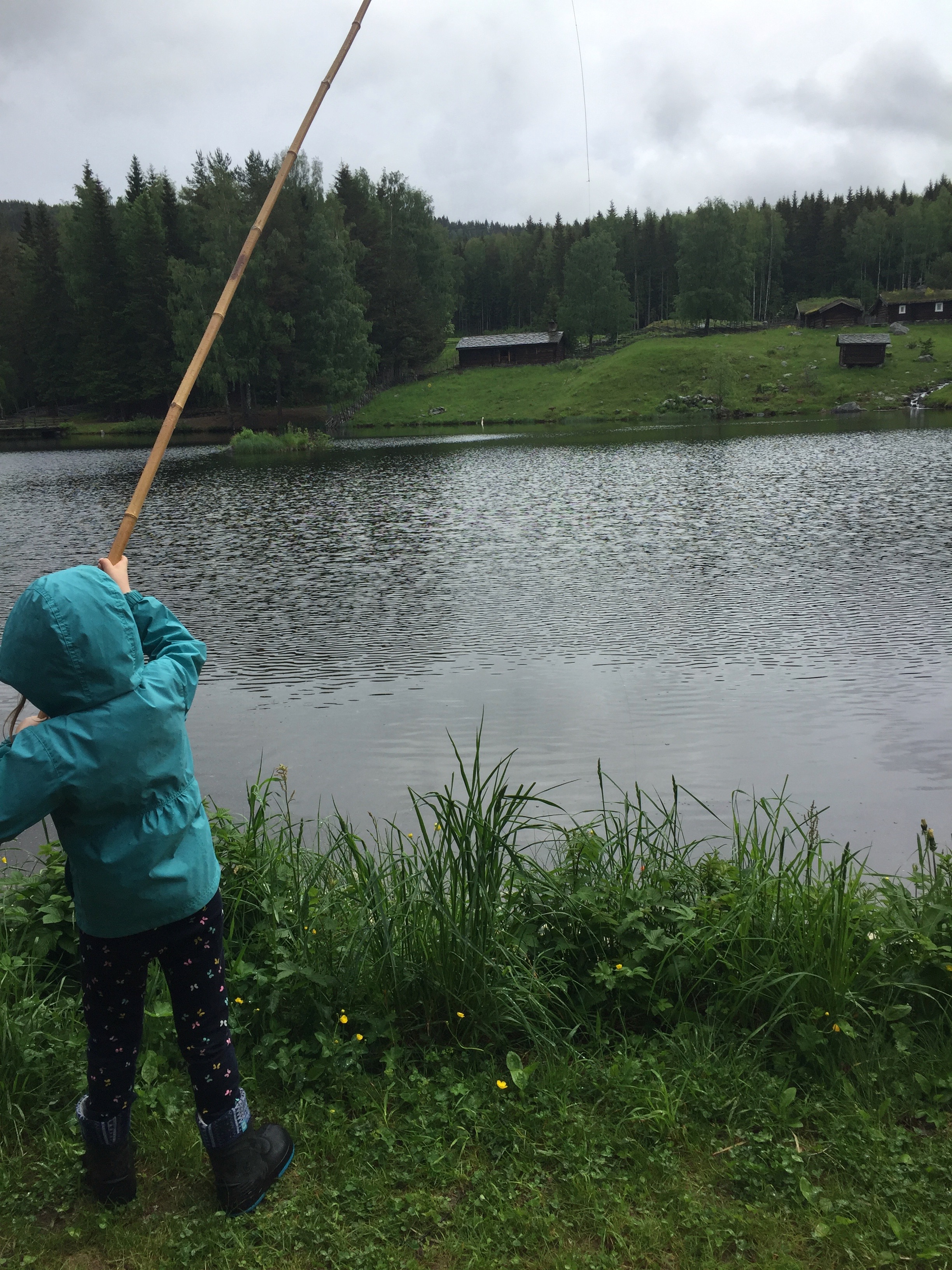


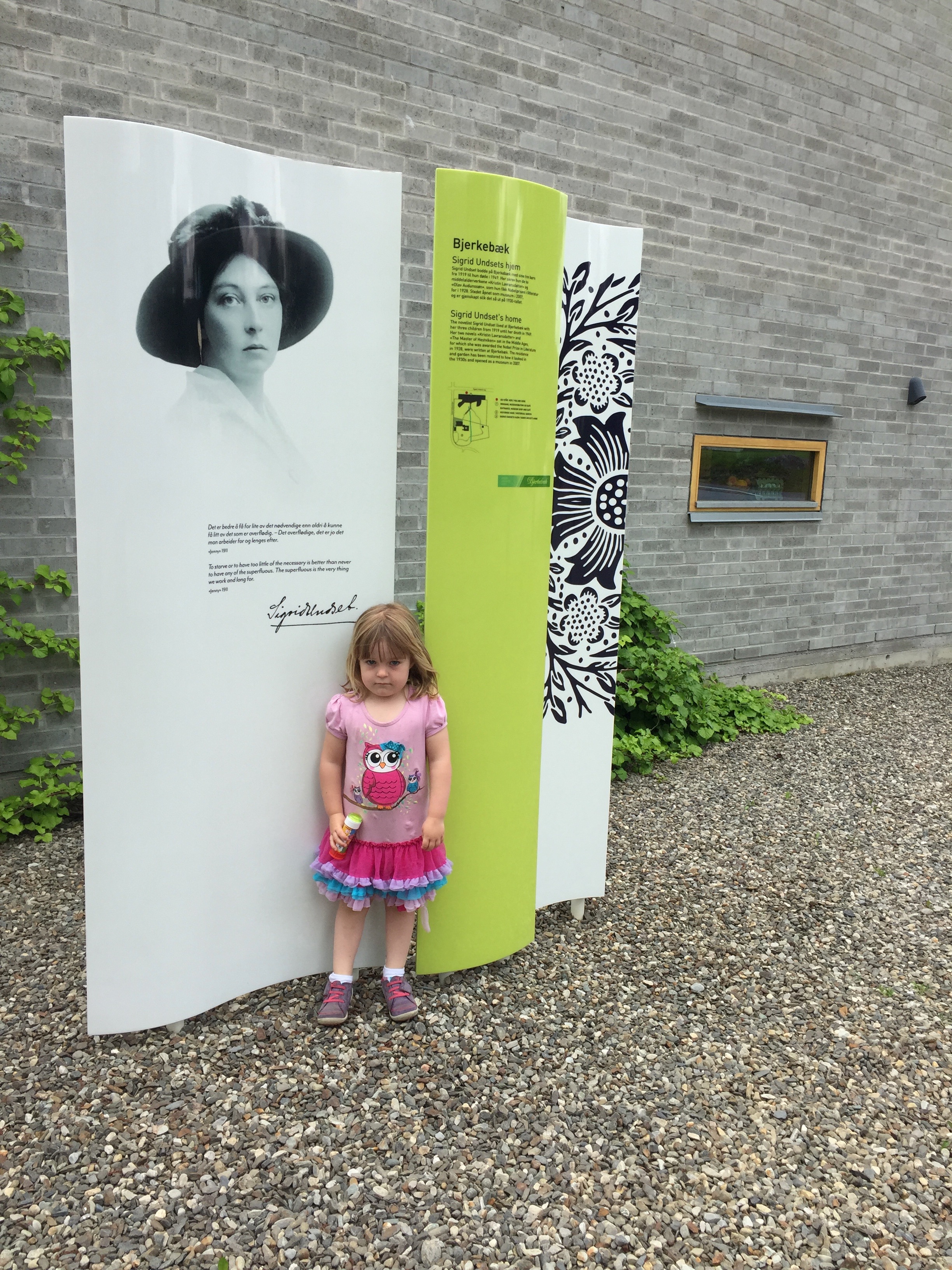
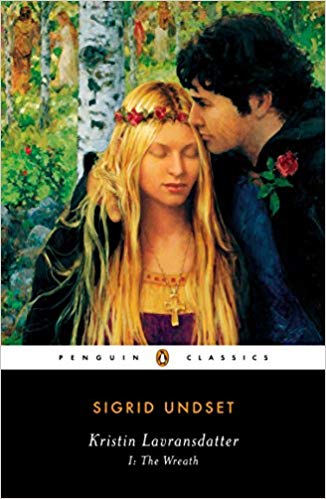


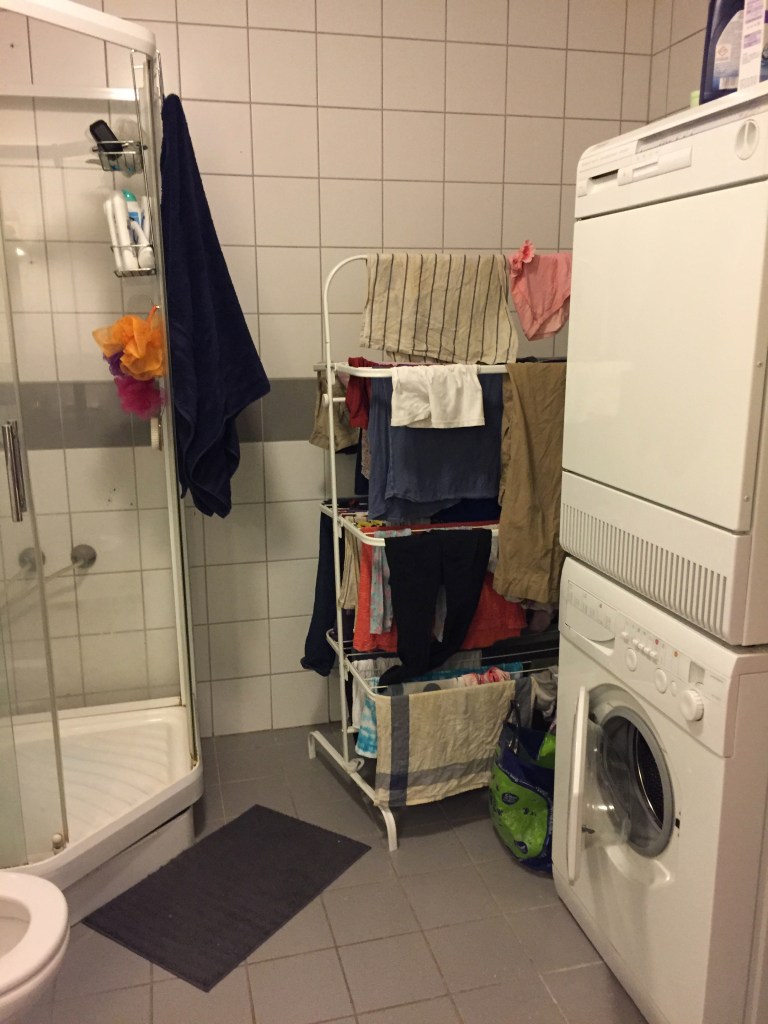


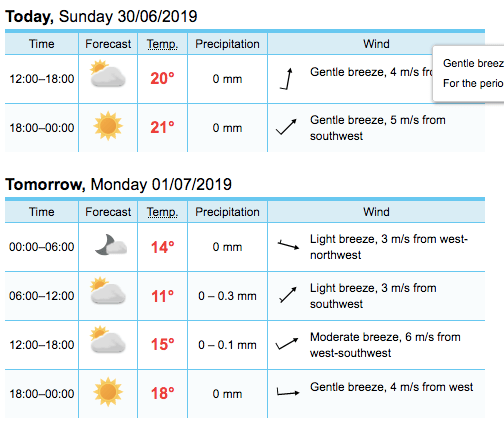
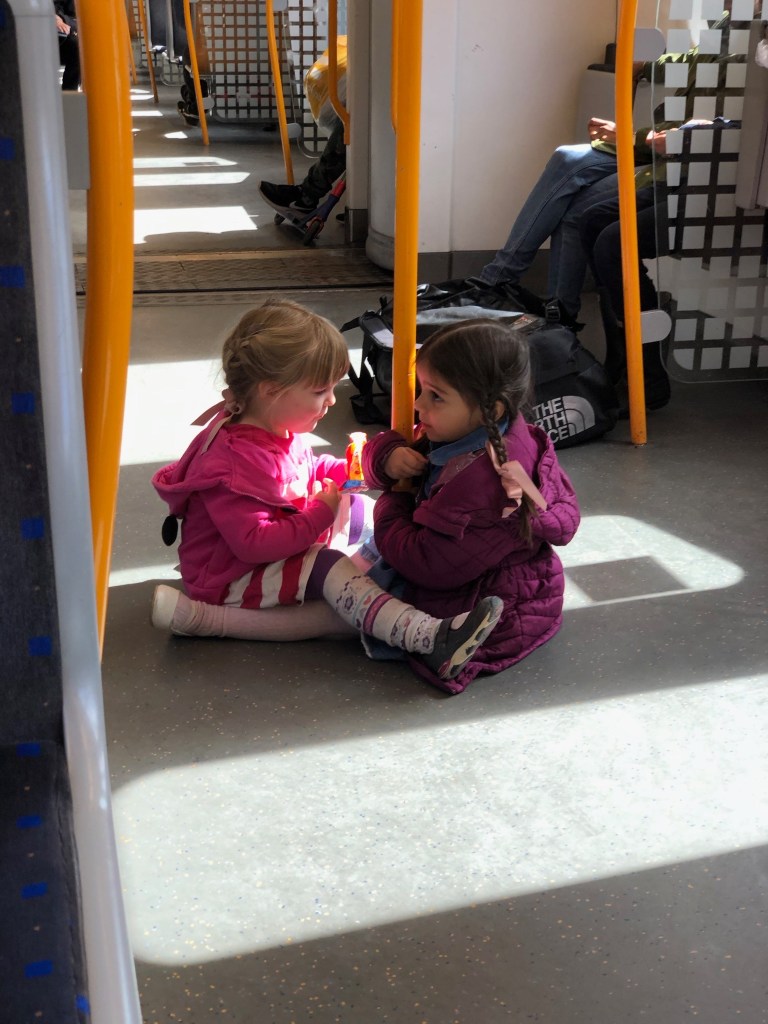

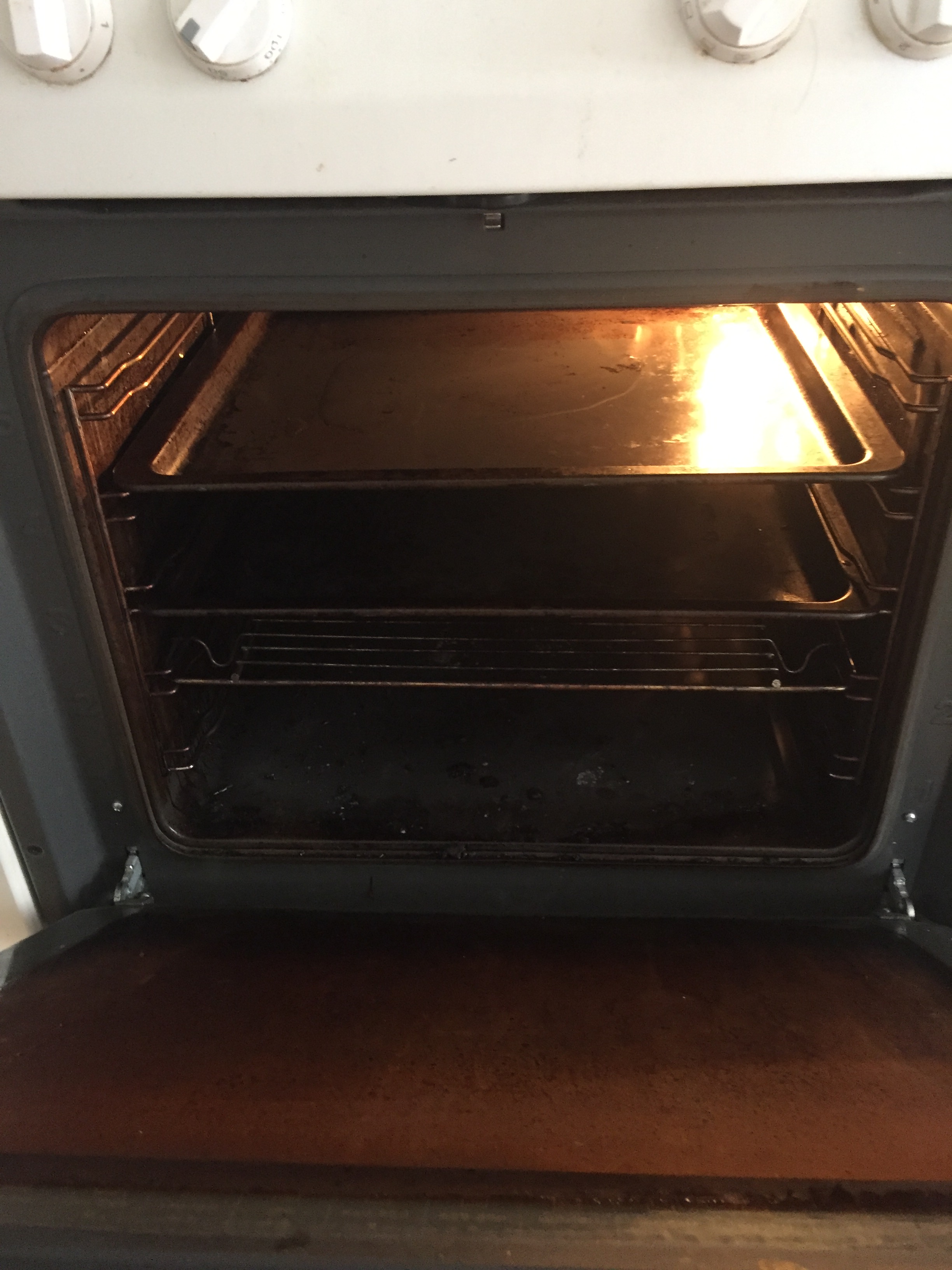
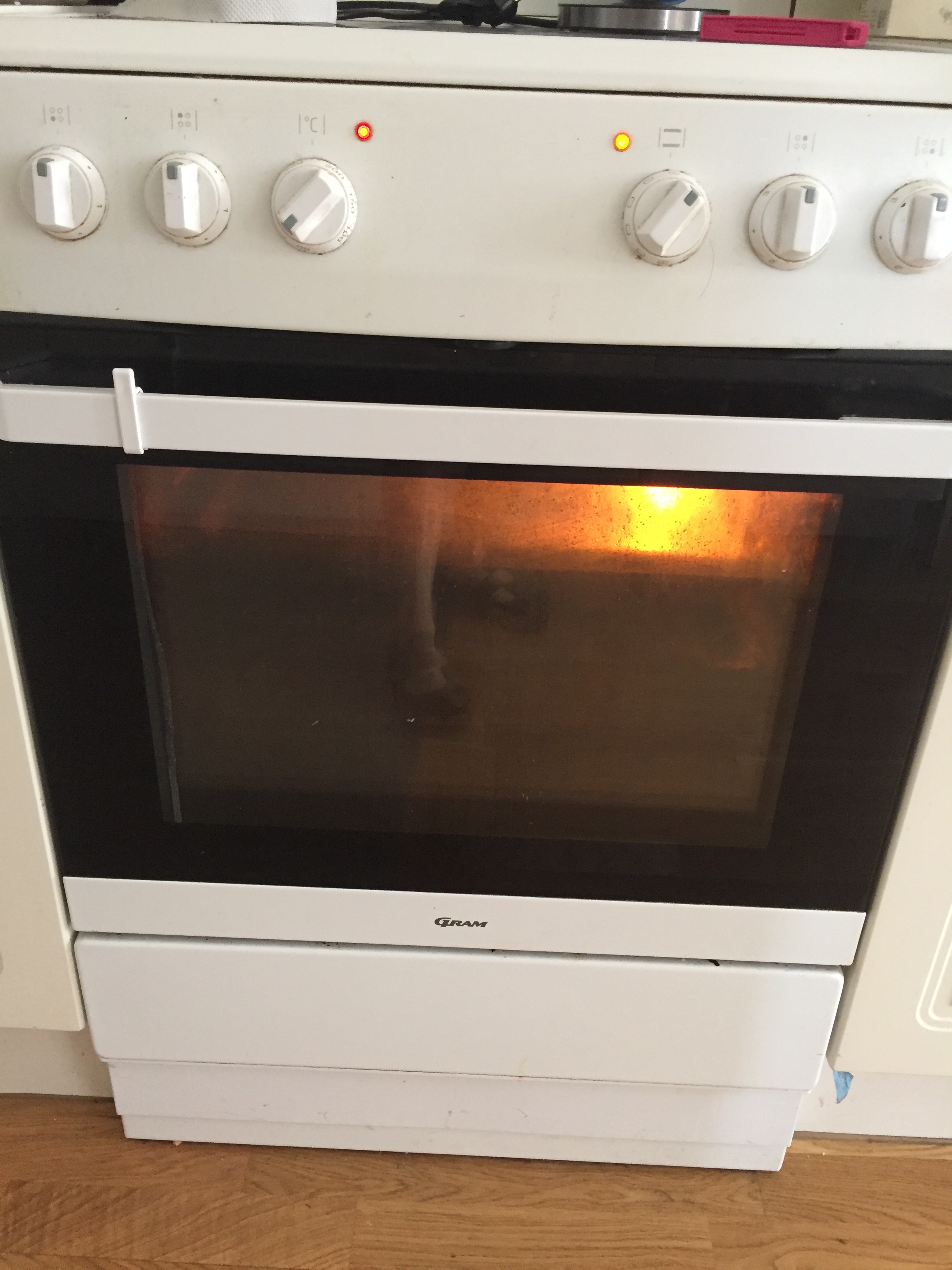




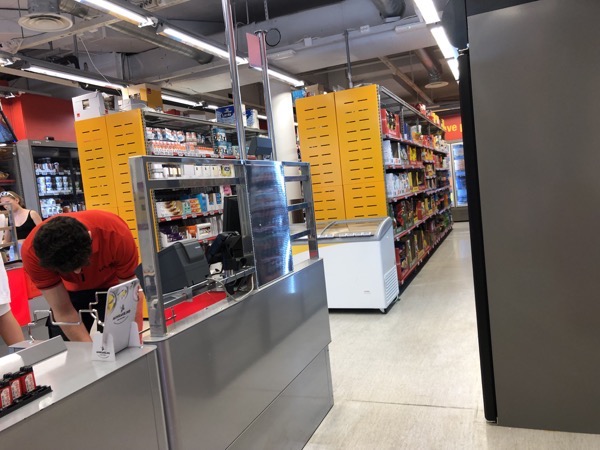
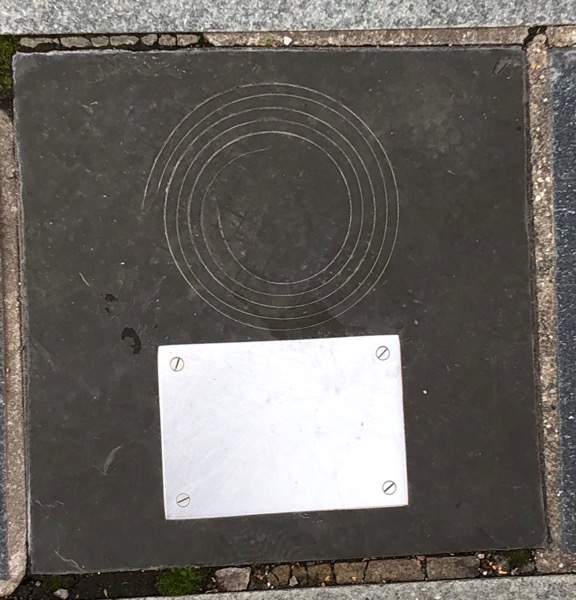

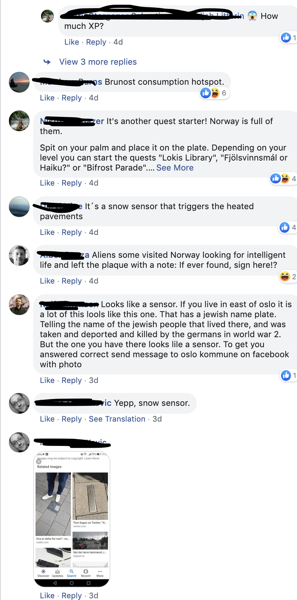
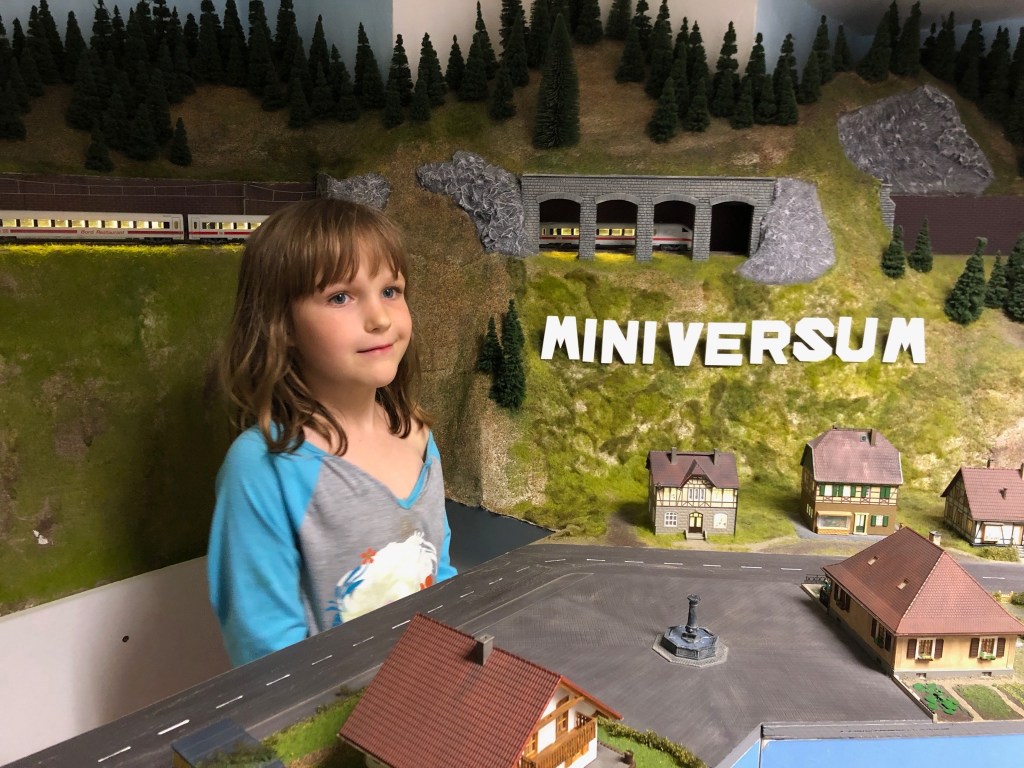
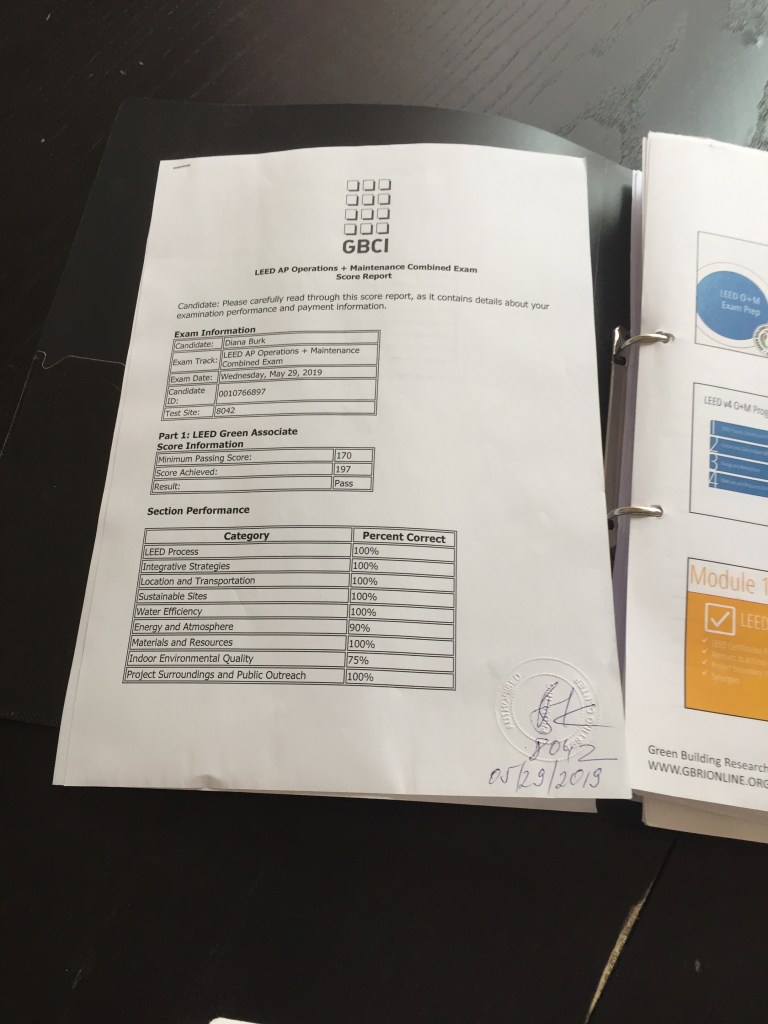







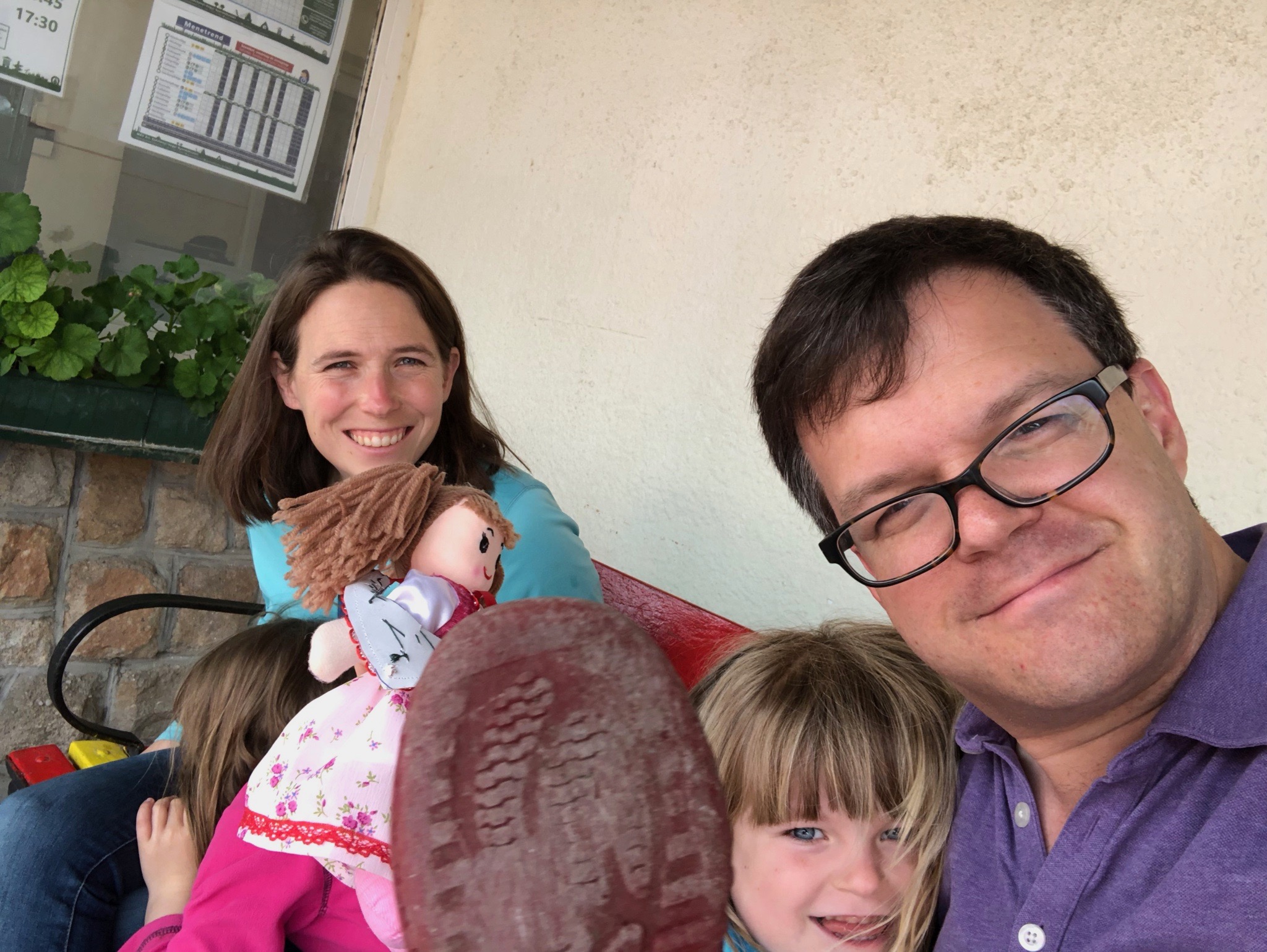



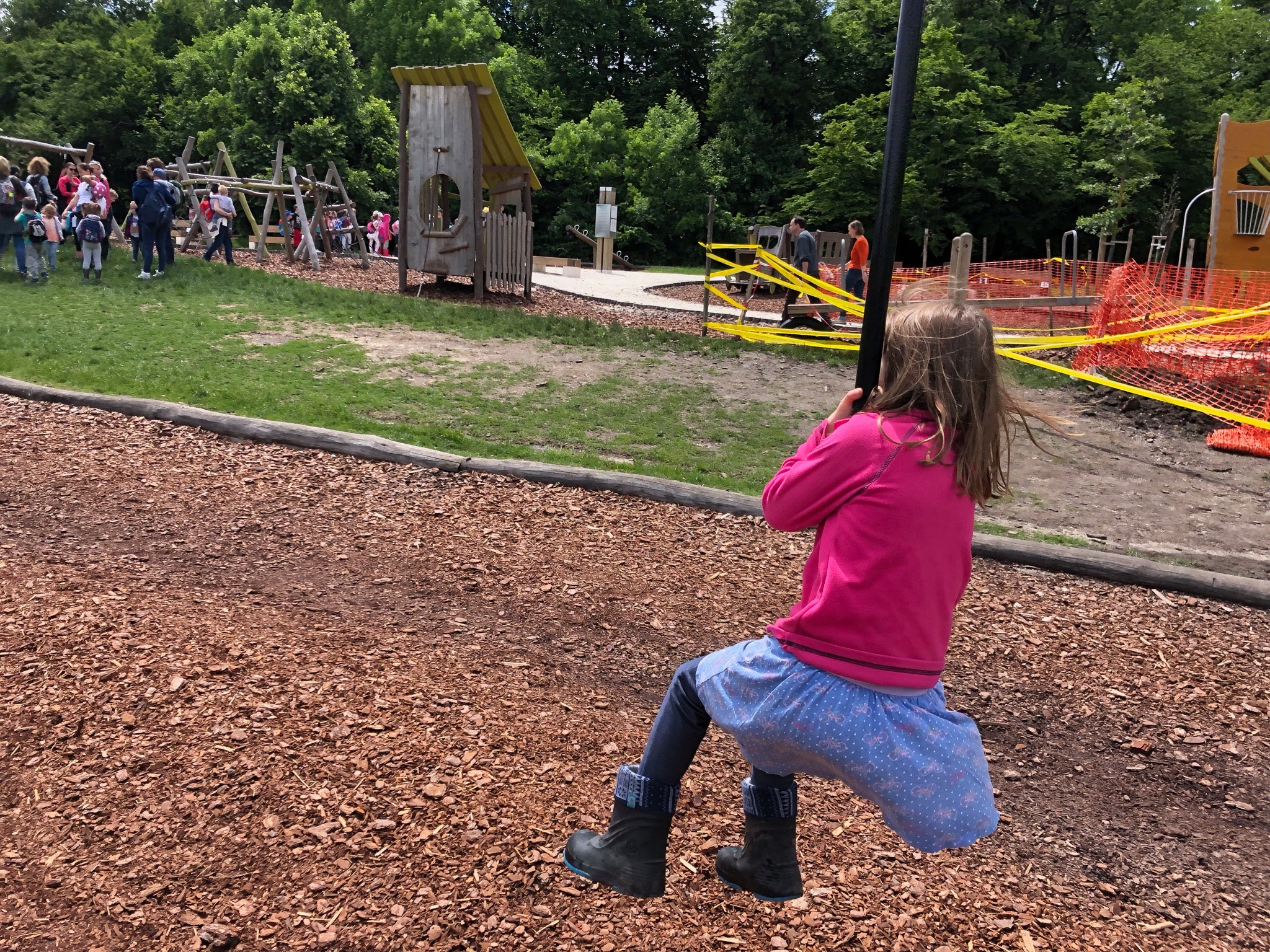




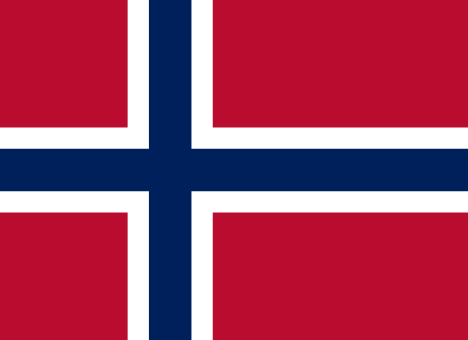 As an aside, I’ve found learning about Norwegian and Scandinavian history to truly fascinating. For much of its history, Norway has been a rather poor country fought over and ruled by its neighbors, Denmark and Sweden, and despite this, was able to negotiate a peaceful dissolution of the union with Sweden in 1905 and a subsequent national vote to invite Denmark’s Prince Carl to serve as king, who changed his name to Haakon VII, a common name for kings in Norway in the medieval ages.
Back to celebrating the 17th of May. As the day approaches, it becomes the talk of the office. It’s clear that Norwegians genuinely want everyone to enjoy their National day, and so we got a lot of advice for what to do.
The centerpiece of the Norwegian National Day are parades of school children. Every barnehage (pre-school) in Norway holds a small parade where children dress in traditional dress, the Bunad (more about that later), and walk around their school grounds. Older children participate in parades in every town in Norway, with the largest parade taking place in Oslo. Norwegians are very proud that their parades on constitution day feature children, and not the military, and this will inevitably be the topic of conversation at some point during the day with a stranger.
Maddie and Ada’s school had an outdoor assembly on the day before to celebrate 17th of May. Here’s a photo of all the children with Norwegian flags.
As an aside, I’ve found learning about Norwegian and Scandinavian history to truly fascinating. For much of its history, Norway has been a rather poor country fought over and ruled by its neighbors, Denmark and Sweden, and despite this, was able to negotiate a peaceful dissolution of the union with Sweden in 1905 and a subsequent national vote to invite Denmark’s Prince Carl to serve as king, who changed his name to Haakon VII, a common name for kings in Norway in the medieval ages.
Back to celebrating the 17th of May. As the day approaches, it becomes the talk of the office. It’s clear that Norwegians genuinely want everyone to enjoy their National day, and so we got a lot of advice for what to do.
The centerpiece of the Norwegian National Day are parades of school children. Every barnehage (pre-school) in Norway holds a small parade where children dress in traditional dress, the Bunad (more about that later), and walk around their school grounds. Older children participate in parades in every town in Norway, with the largest parade taking place in Oslo. Norwegians are very proud that their parades on constitution day feature children, and not the military, and this will inevitably be the topic of conversation at some point during the day with a stranger.
Maddie and Ada’s school had an outdoor assembly on the day before to celebrate 17th of May. Here’s a photo of all the children with Norwegian flags.
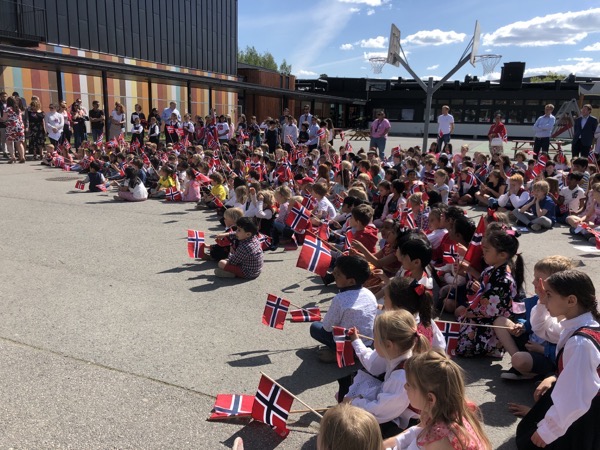 Ada’s teacher happened to have a bunad in Ada’s size, which she wore when her class celebrated May 17th the day before as you can see in the video below:
Ada’s teacher happened to have a bunad in Ada’s size, which she wore when her class celebrated May 17th the day before as you can see in the video below:
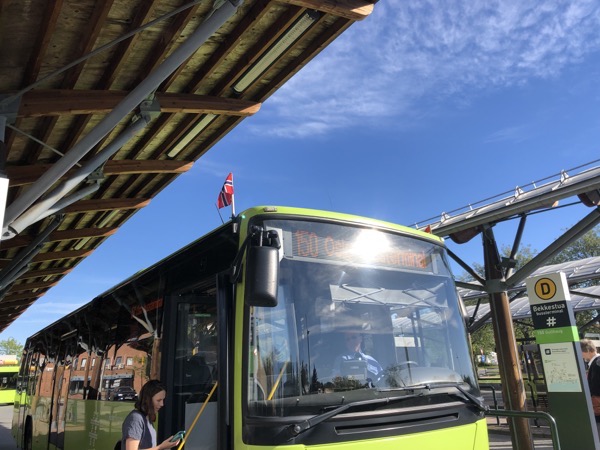 The bus was nearly packed, and aside from Diana and I, everyone was either in bunad, or a suit with tie. This remains the only time I’ve ever seen Norwegians wear a tie—not even on a few formal occasions when I’ve been at UiO is it customary to wear ties.
We walked to the Royal Palace grounds so we could see the children’s parade pass by Palace while the royal family dutifully waved to the children. Almost everyone watching the parade was also wearing bunad which was pretty amazing. Below is a pic of Maddie and Ada in downtown Oslo:
The bus was nearly packed, and aside from Diana and I, everyone was either in bunad, or a suit with tie. This remains the only time I’ve ever seen Norwegians wear a tie—not even on a few formal occasions when I’ve been at UiO is it customary to wear ties.
We walked to the Royal Palace grounds so we could see the children’s parade pass by Palace while the royal family dutifully waved to the children. Almost everyone watching the parade was also wearing bunad which was pretty amazing. Below is a pic of Maddie and Ada in downtown Oslo:


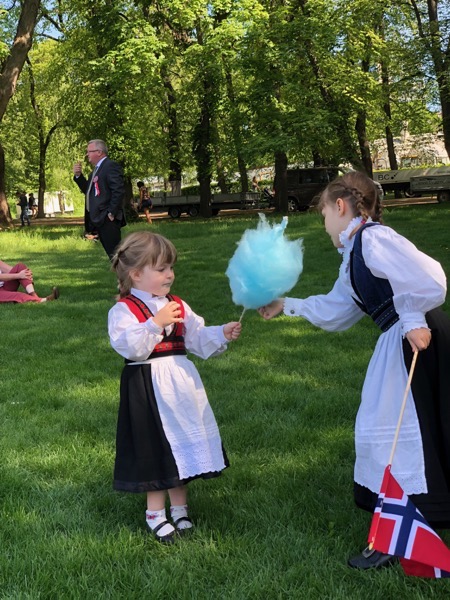

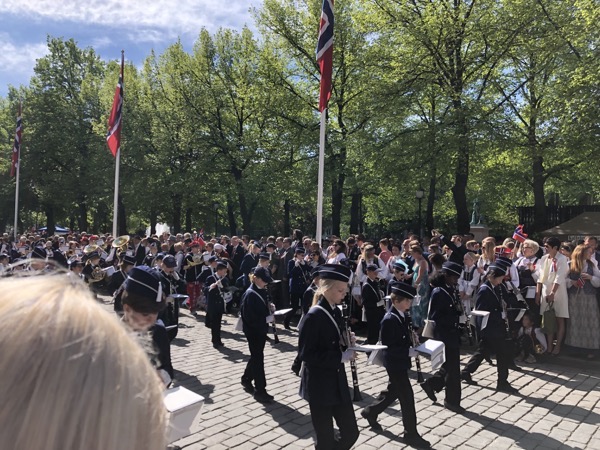
 After celebrating May 17th in downtown Oslo, we headed to a friend’s house with other families from OIS, then we joined the children’s parade in Bekkestua which is called “blomstertog” because the children give out flowers (blomster) to the people watching the parade (tog). You can see all of us in the parade around the 29 second mark below:
After celebrating May 17th in downtown Oslo, we headed to a friend’s house with other families from OIS, then we joined the children’s parade in Bekkestua which is called “blomstertog” because the children give out flowers (blomster) to the people watching the parade (tog). You can see all of us in the parade around the 29 second mark below:

